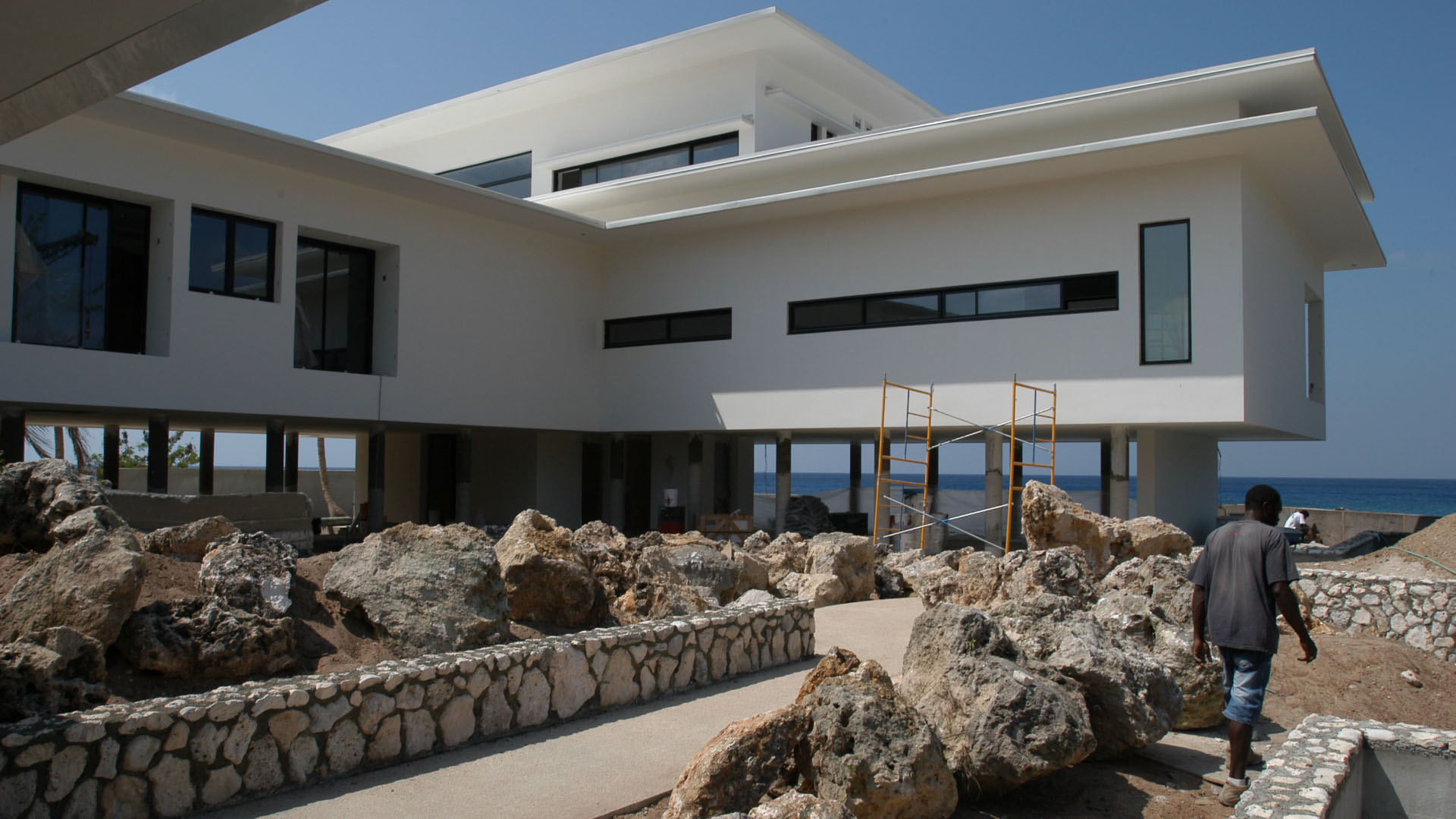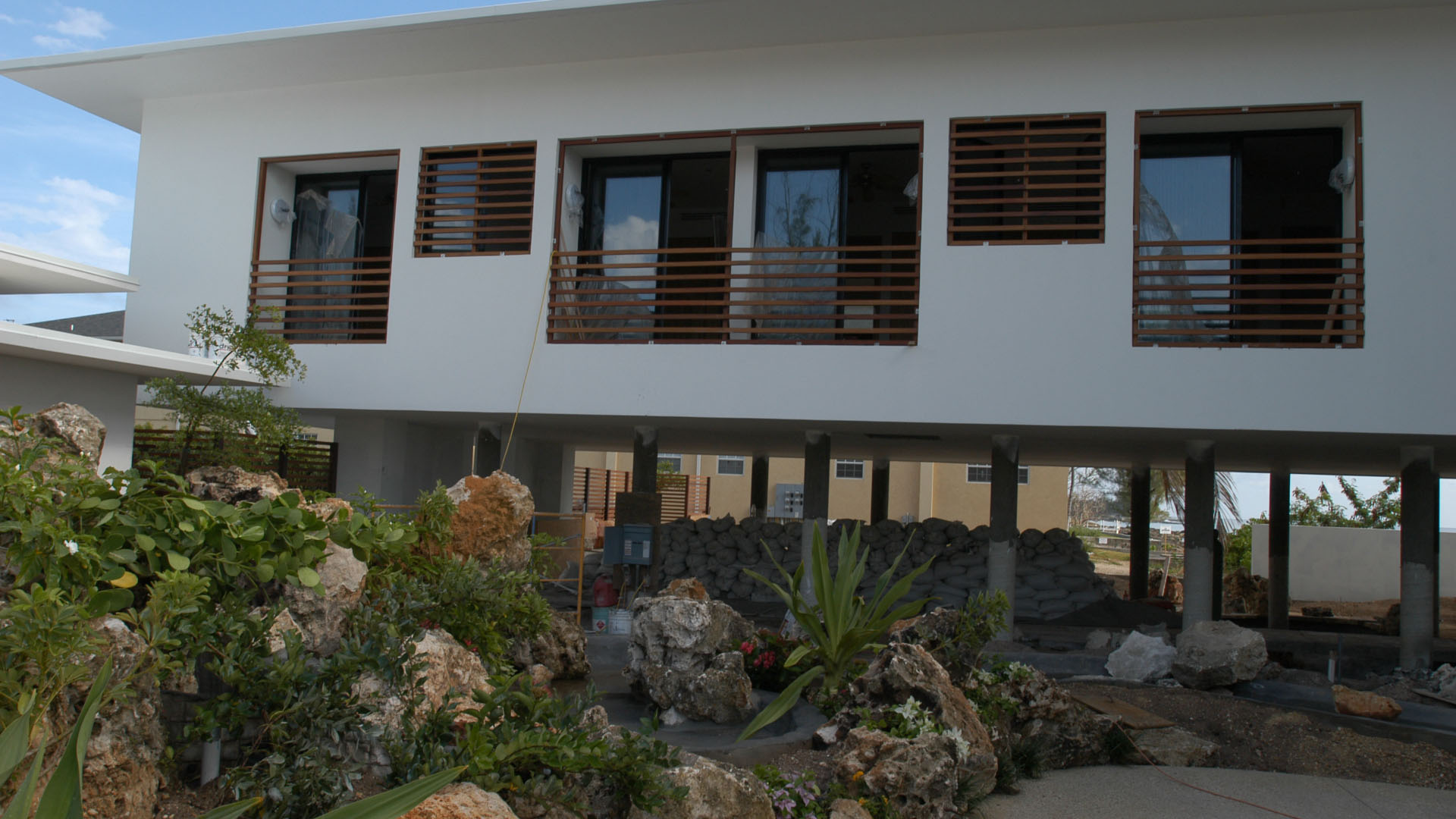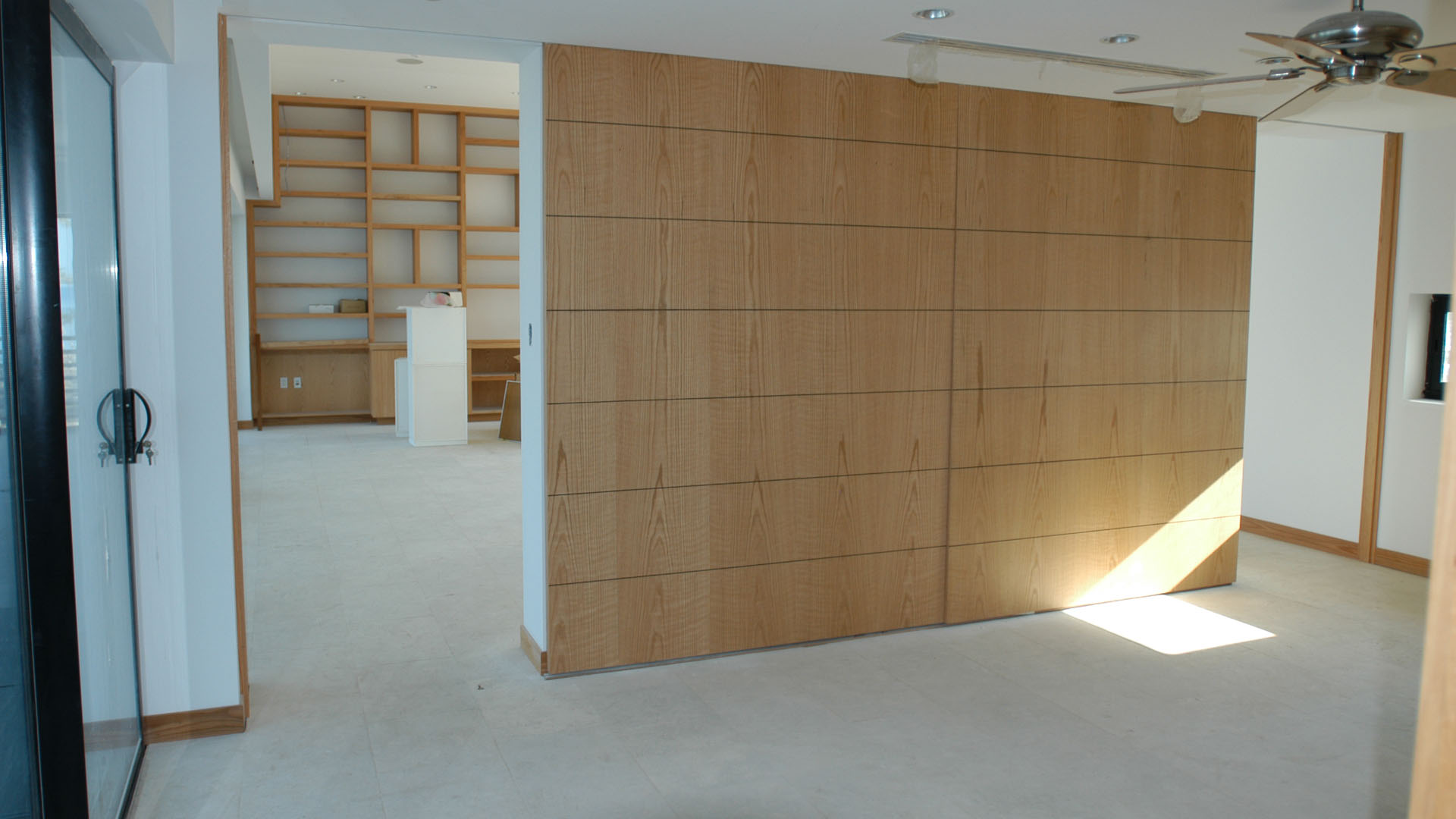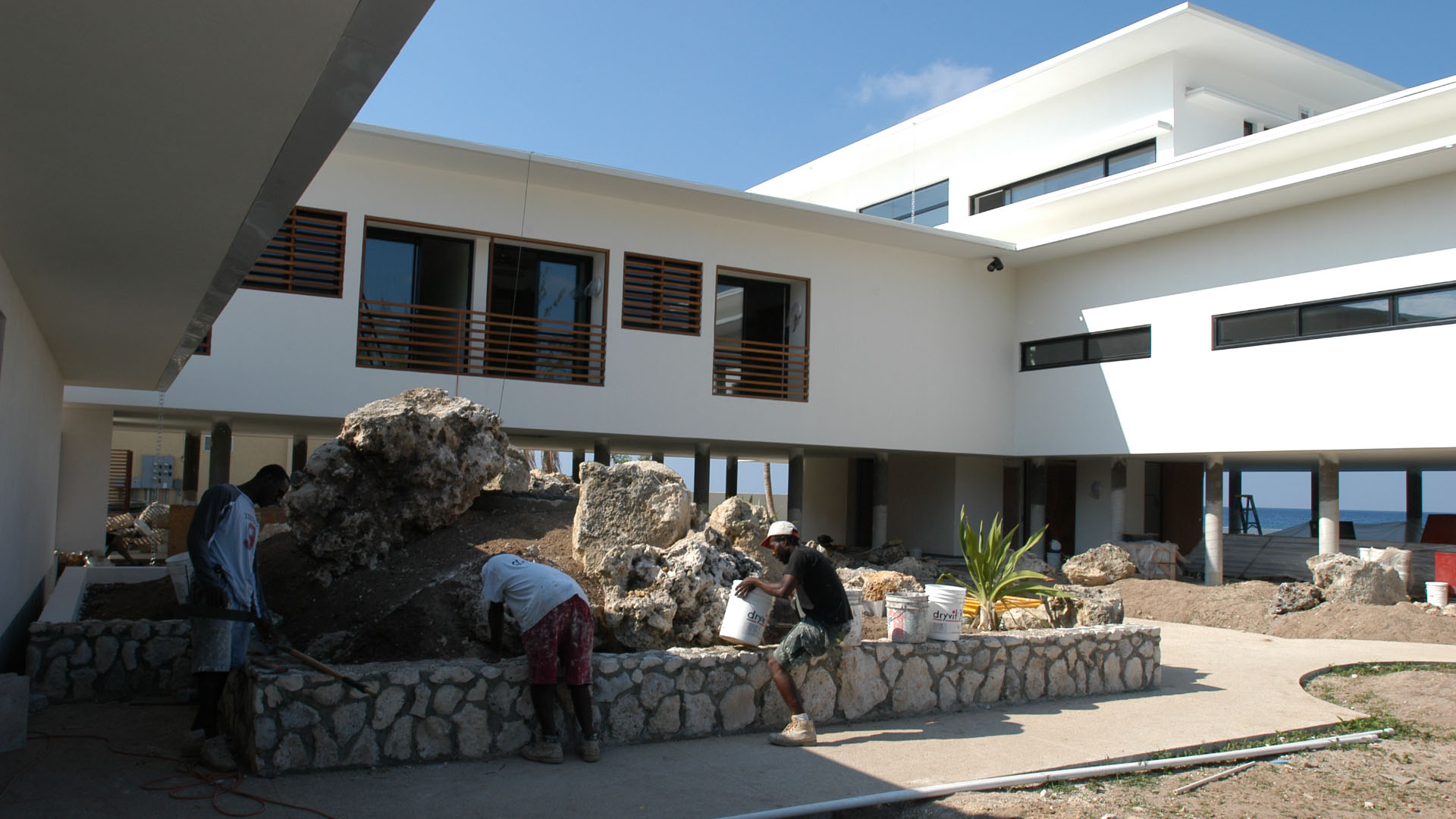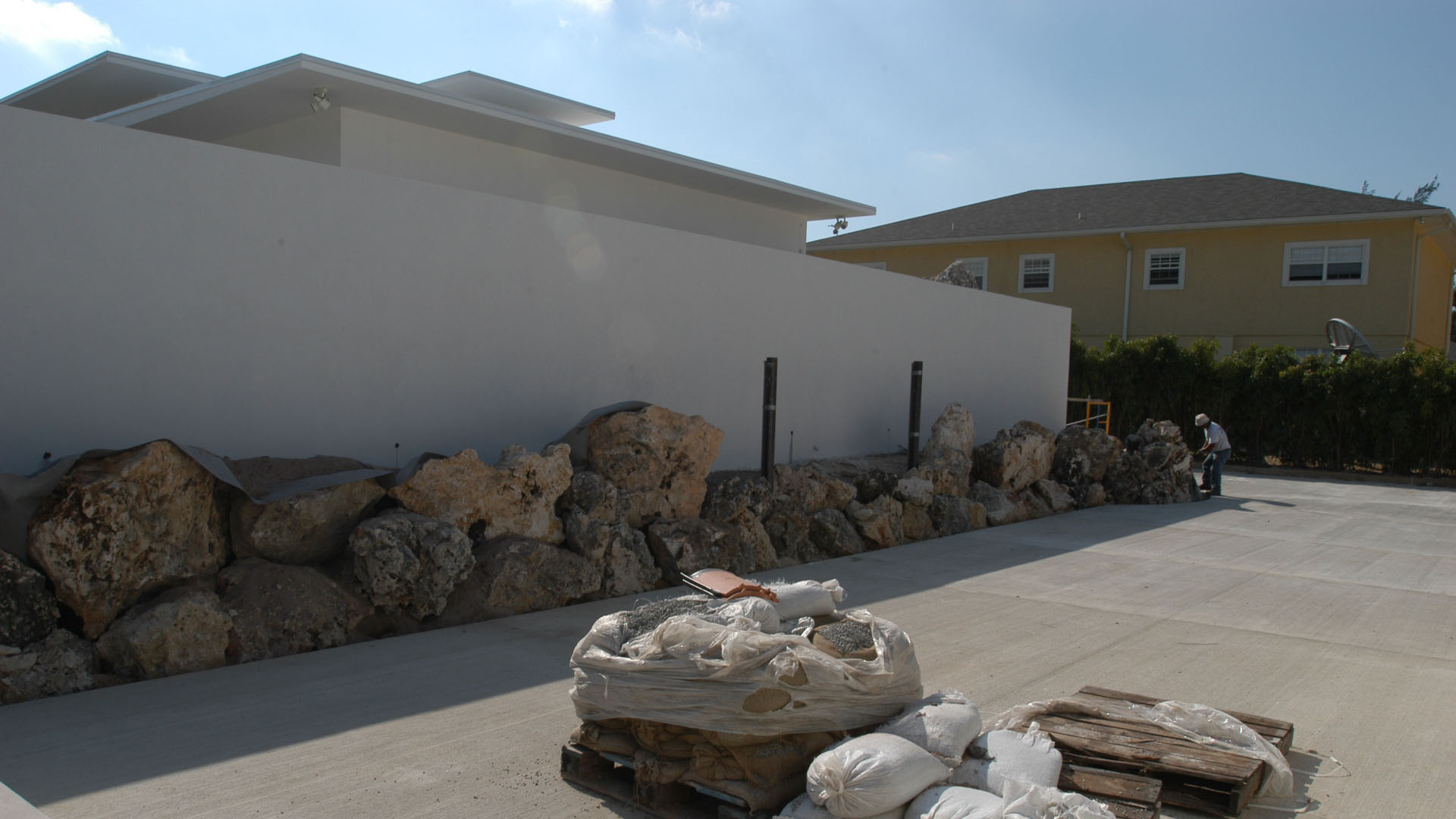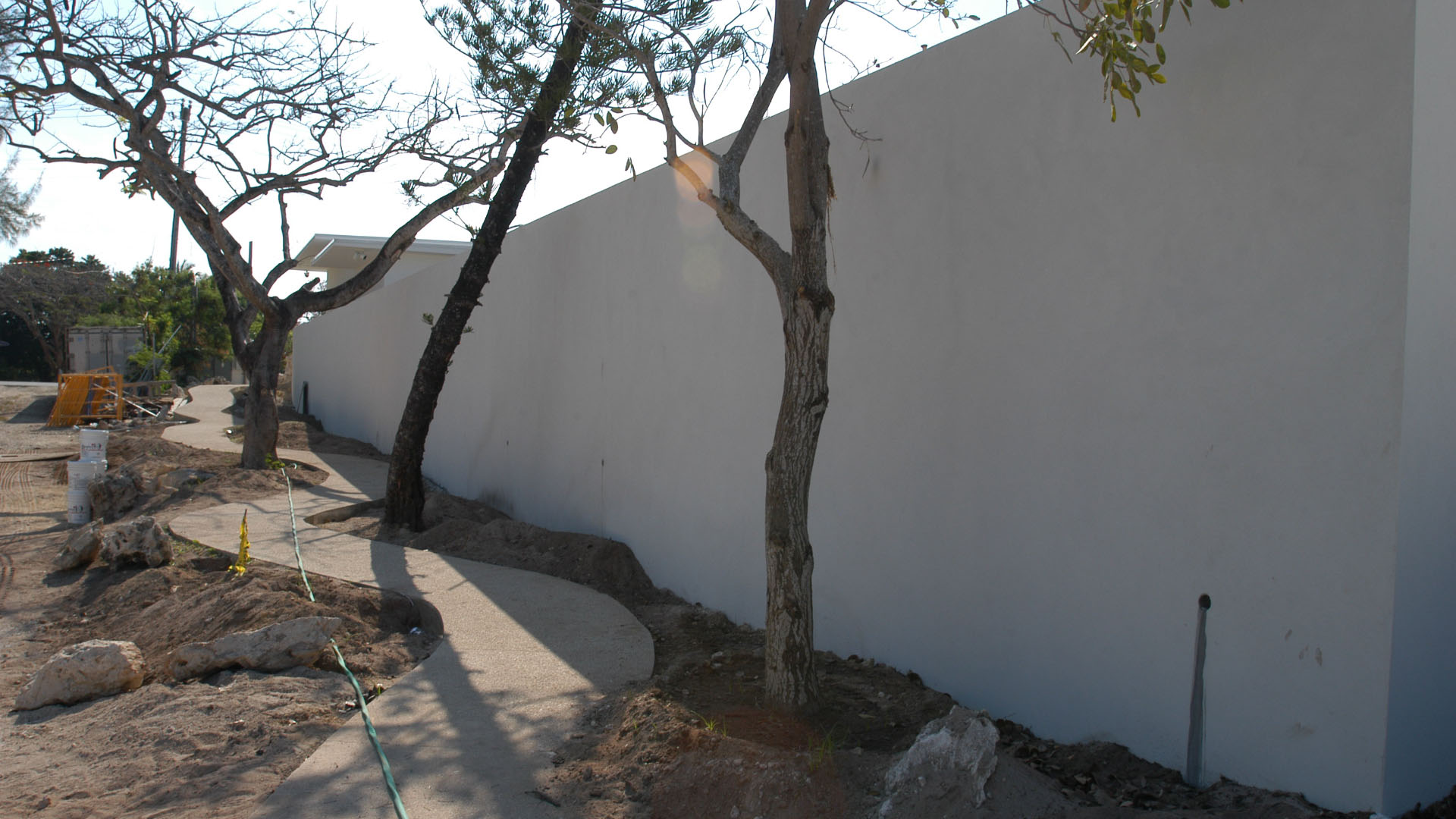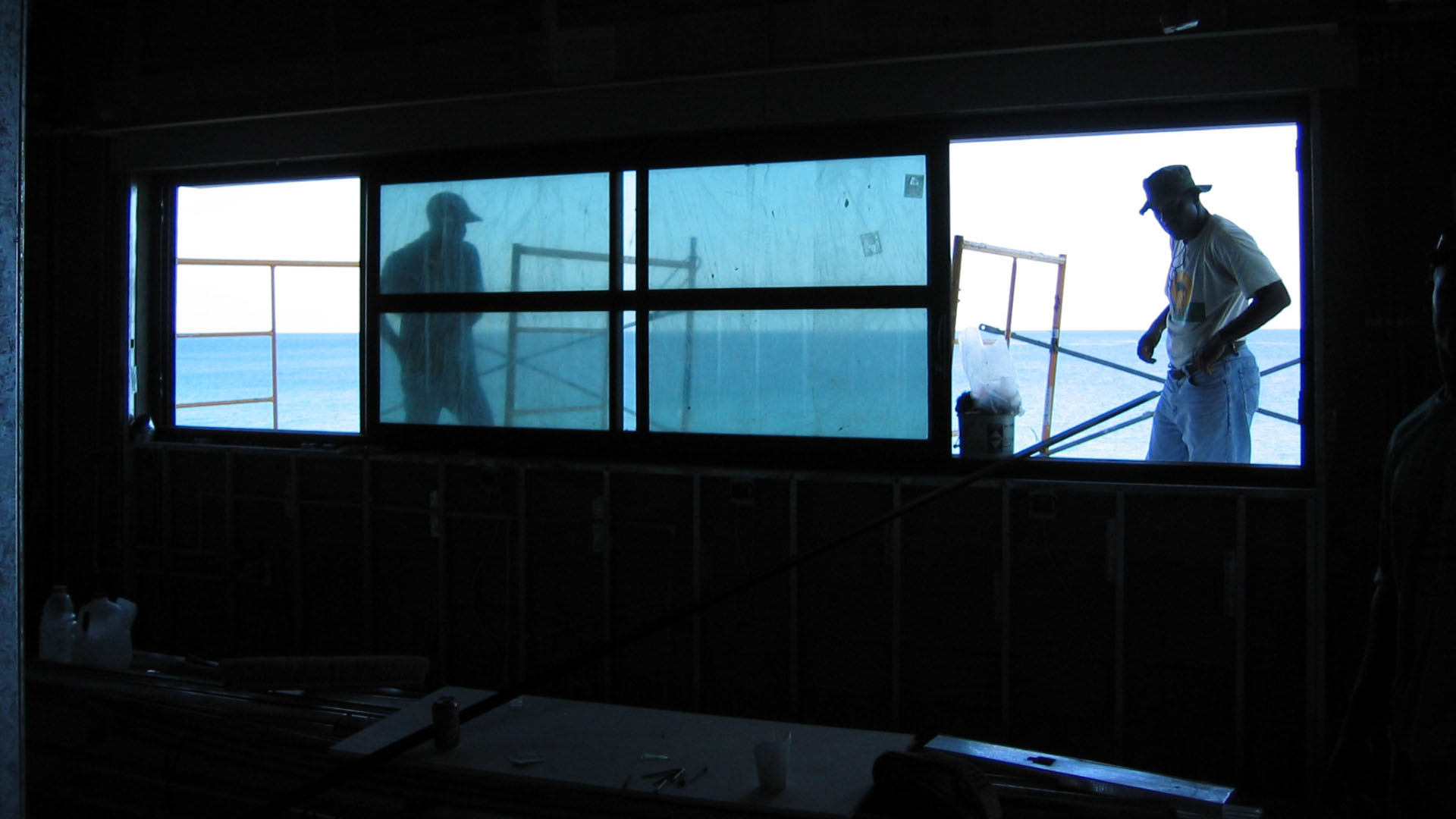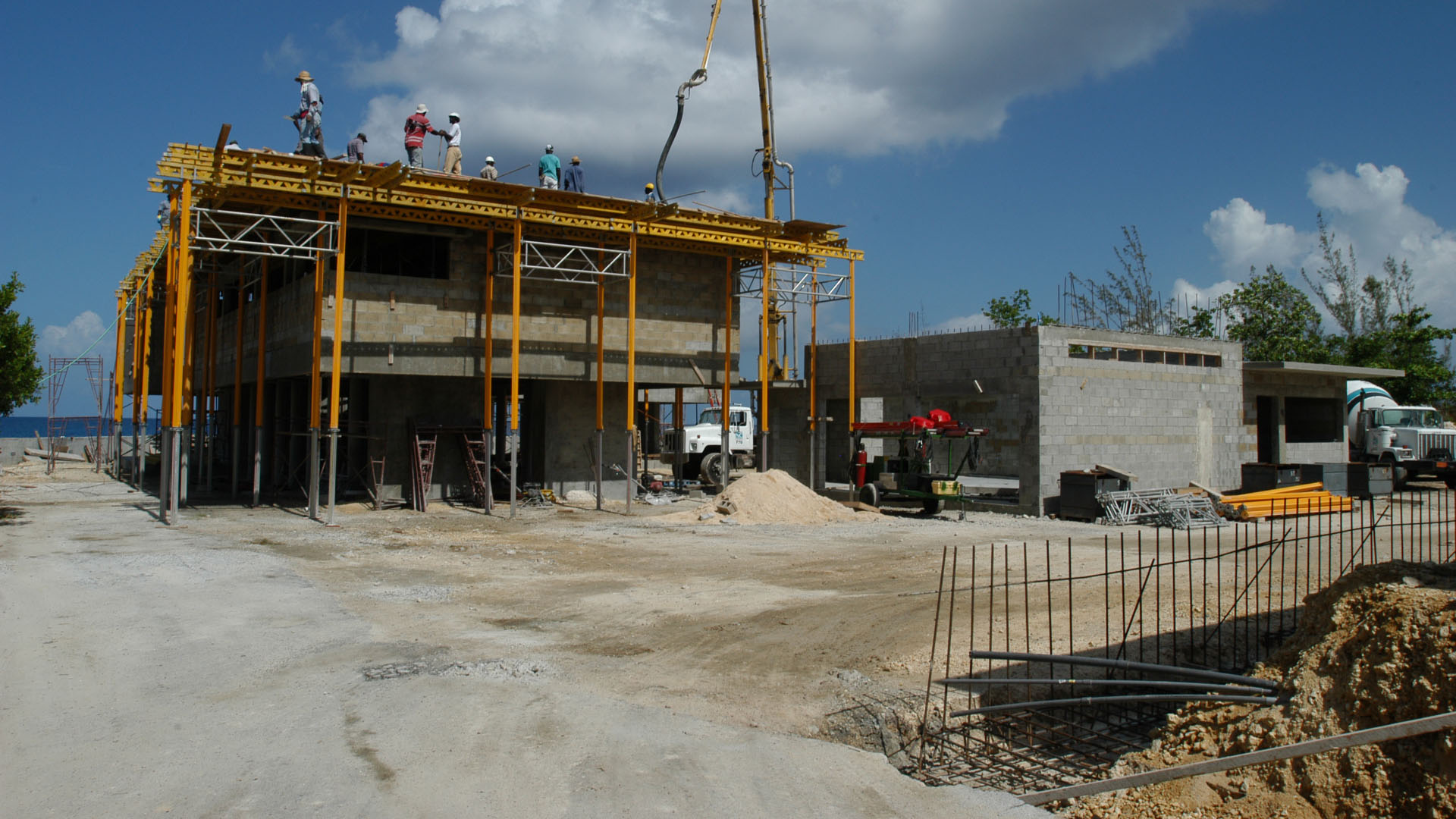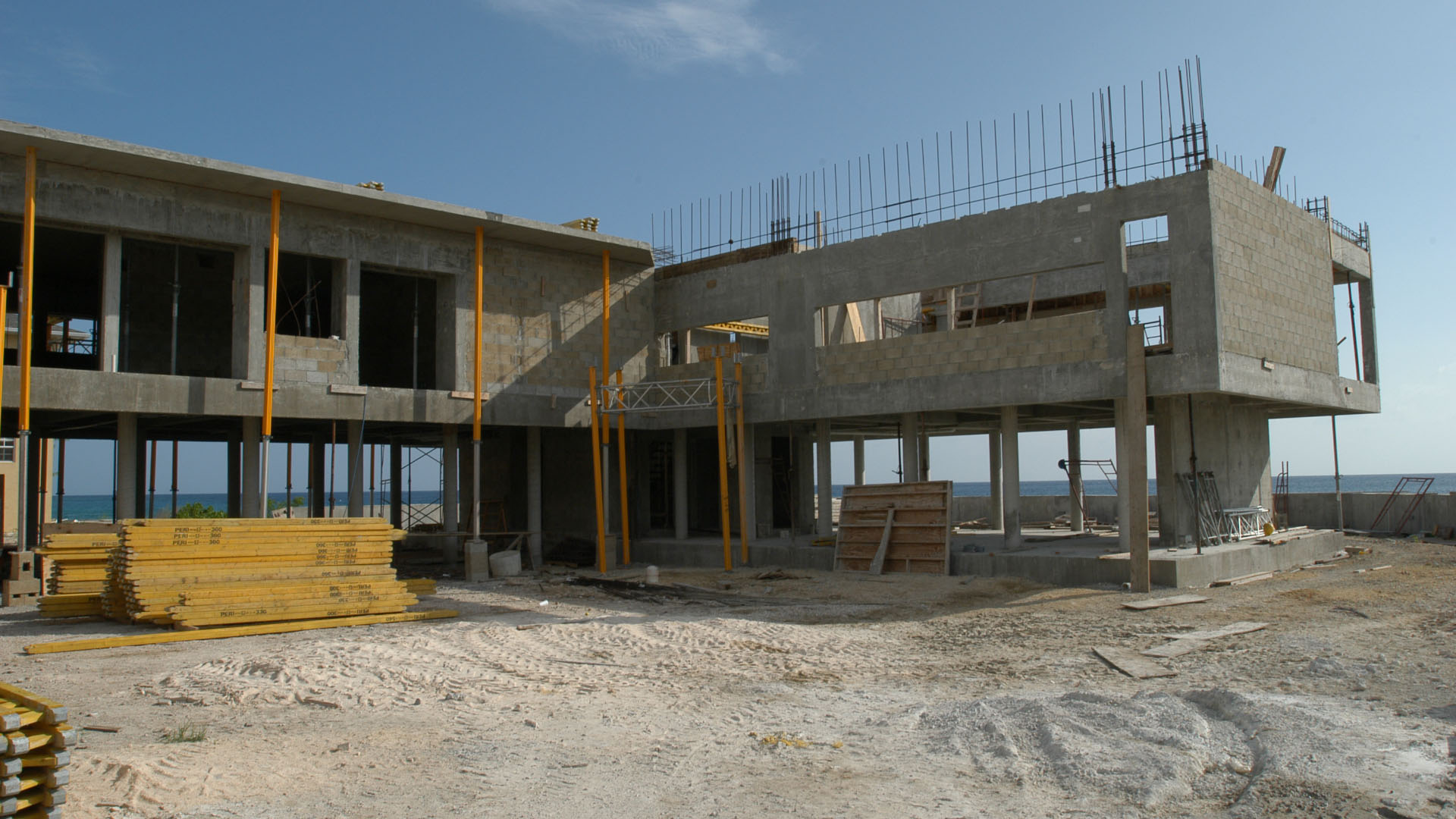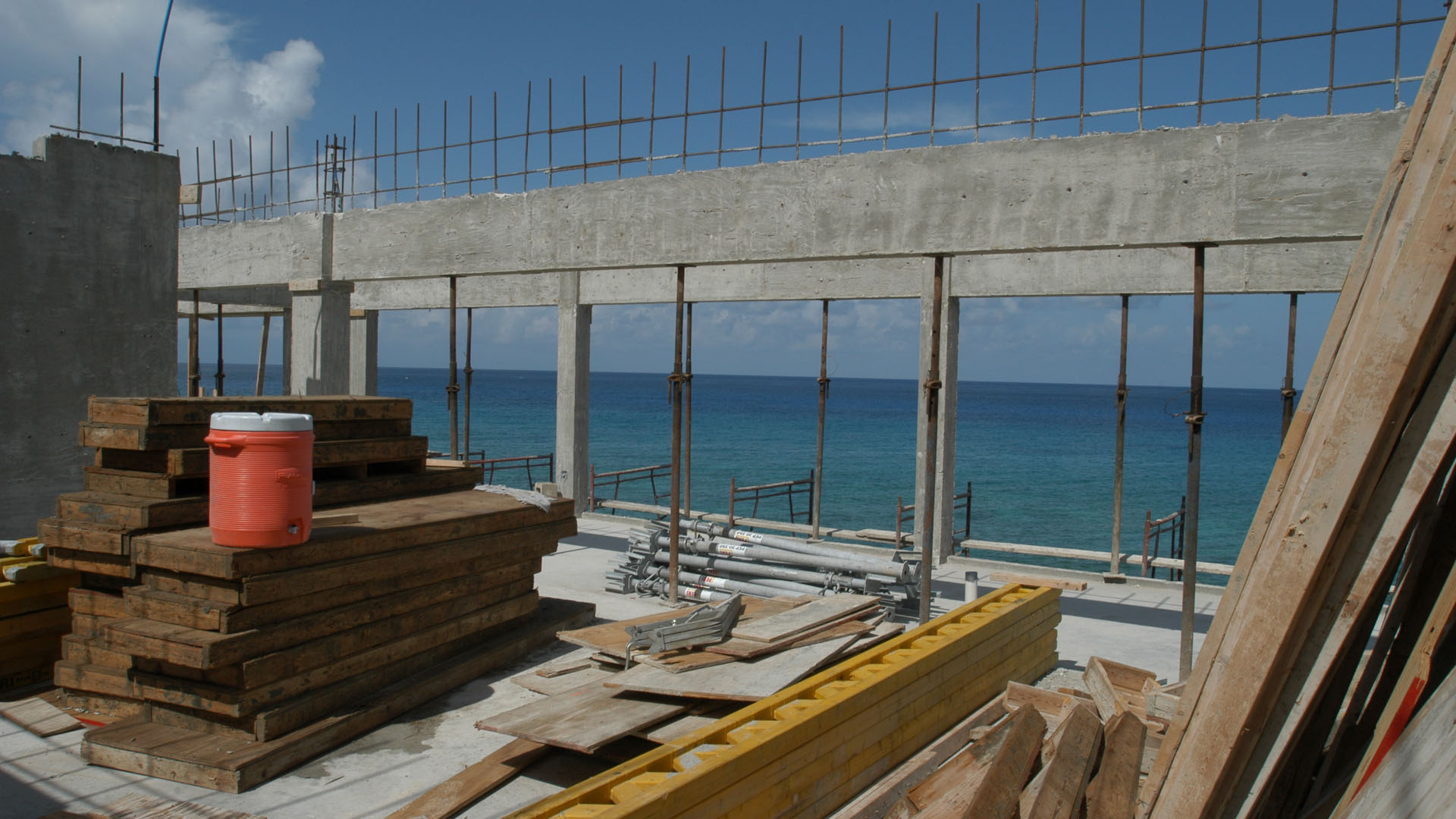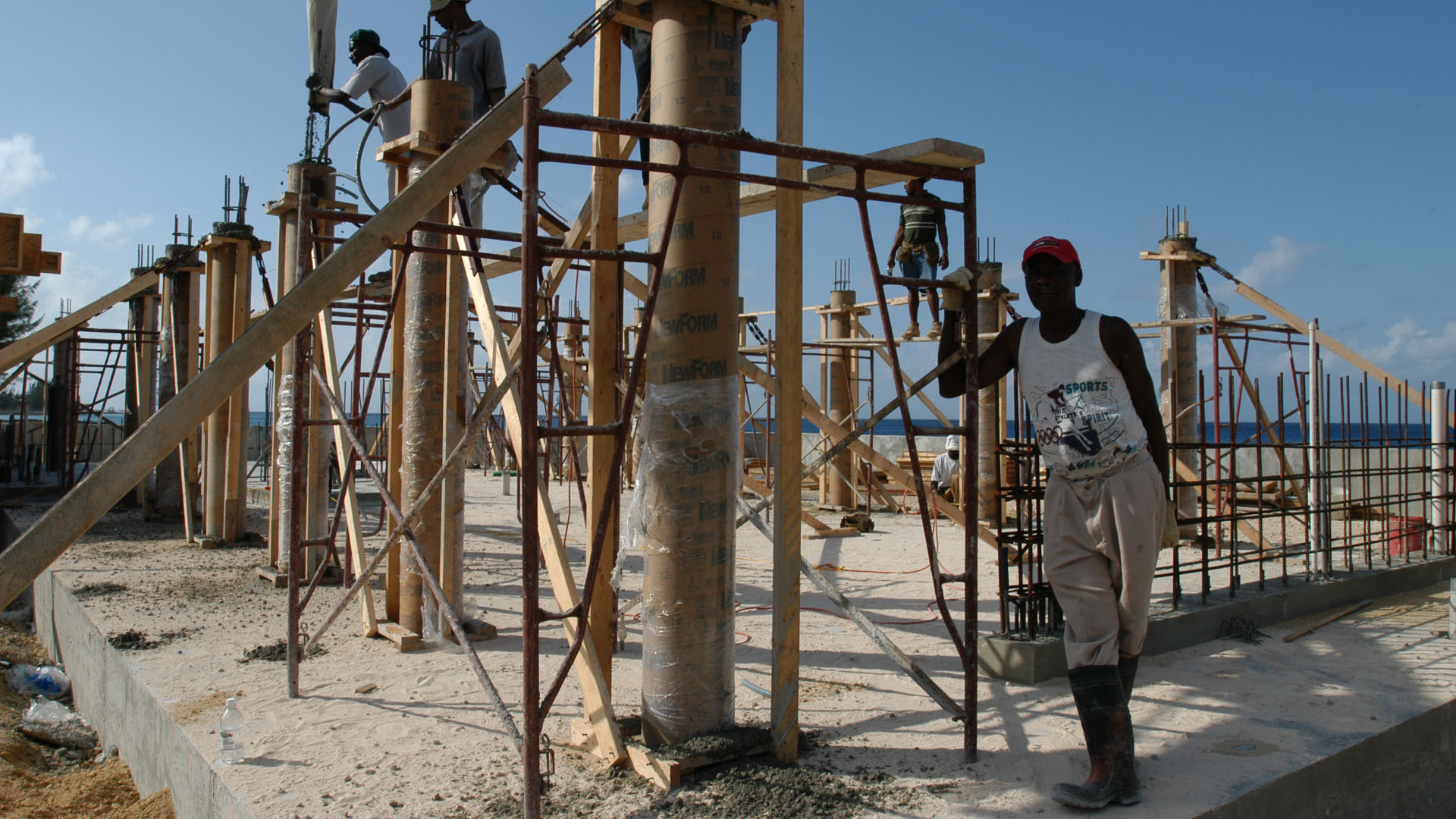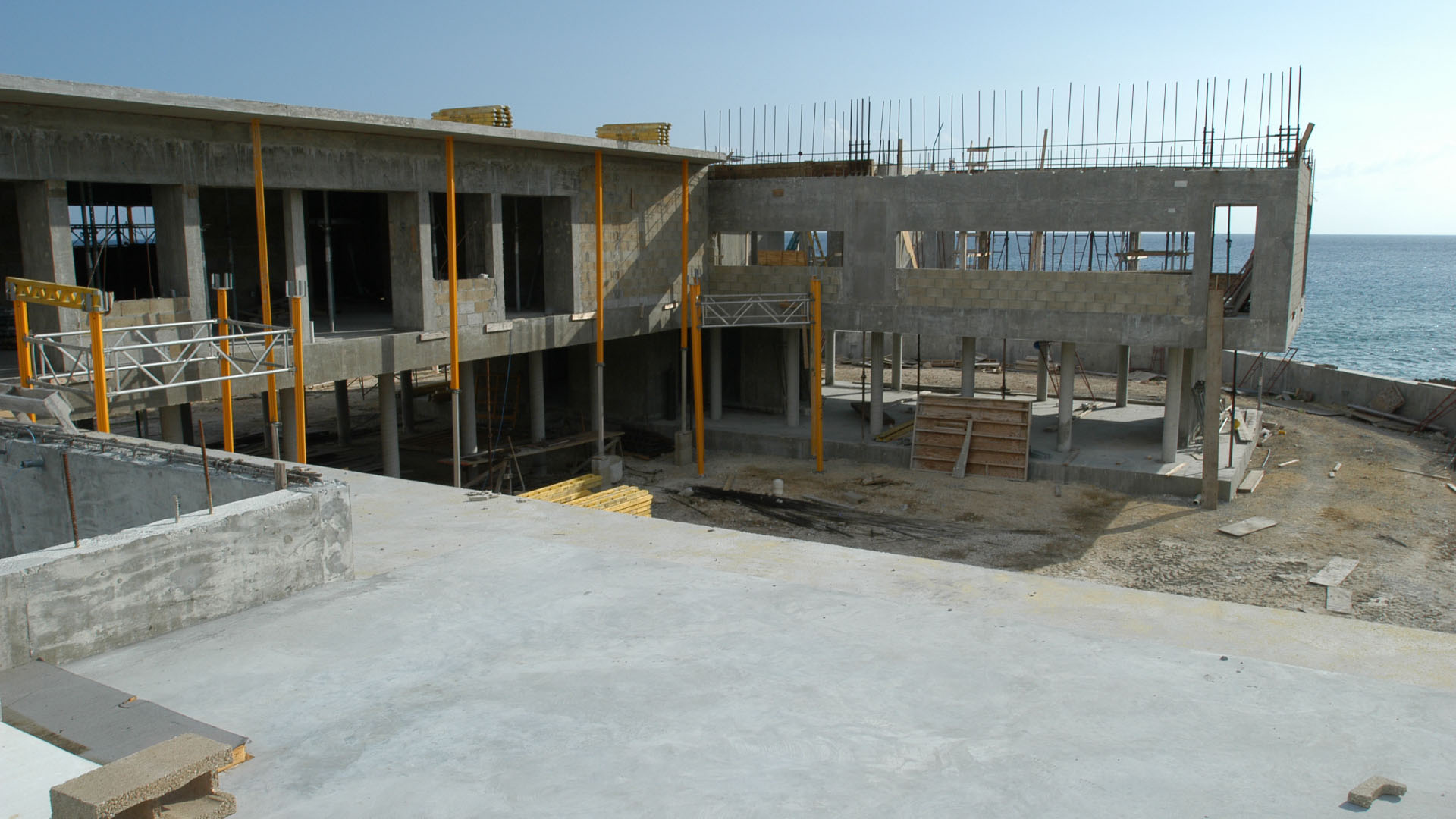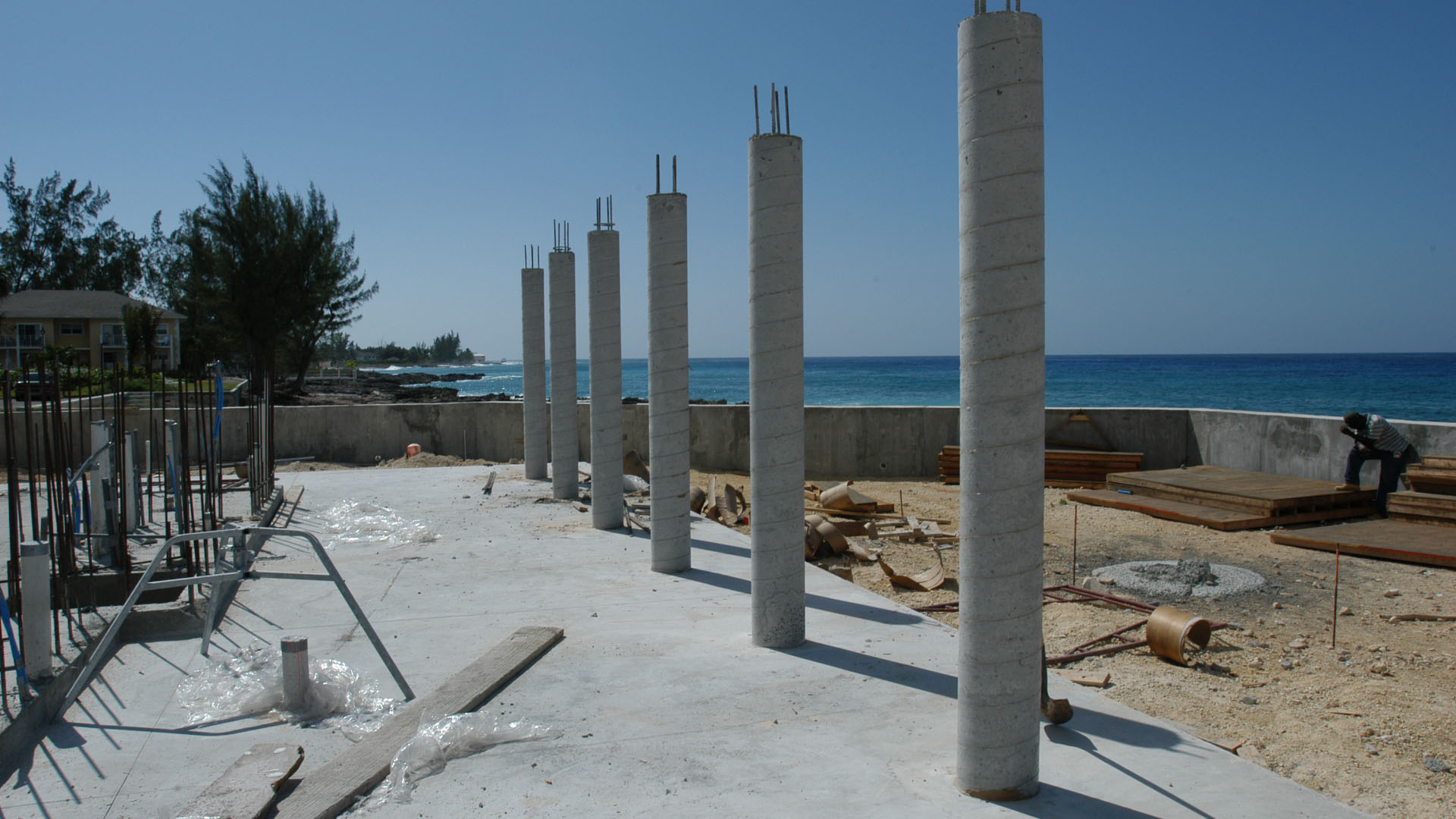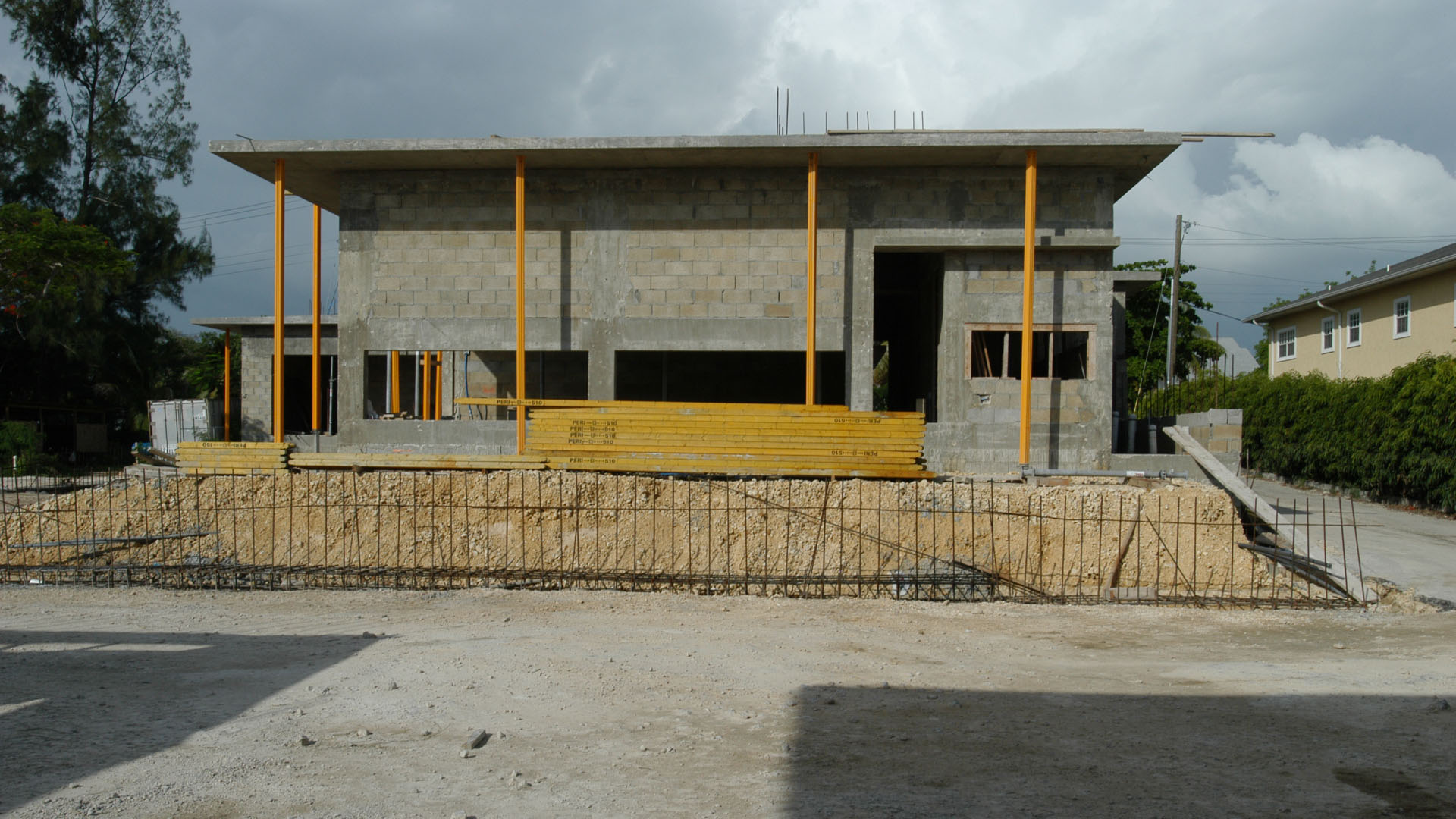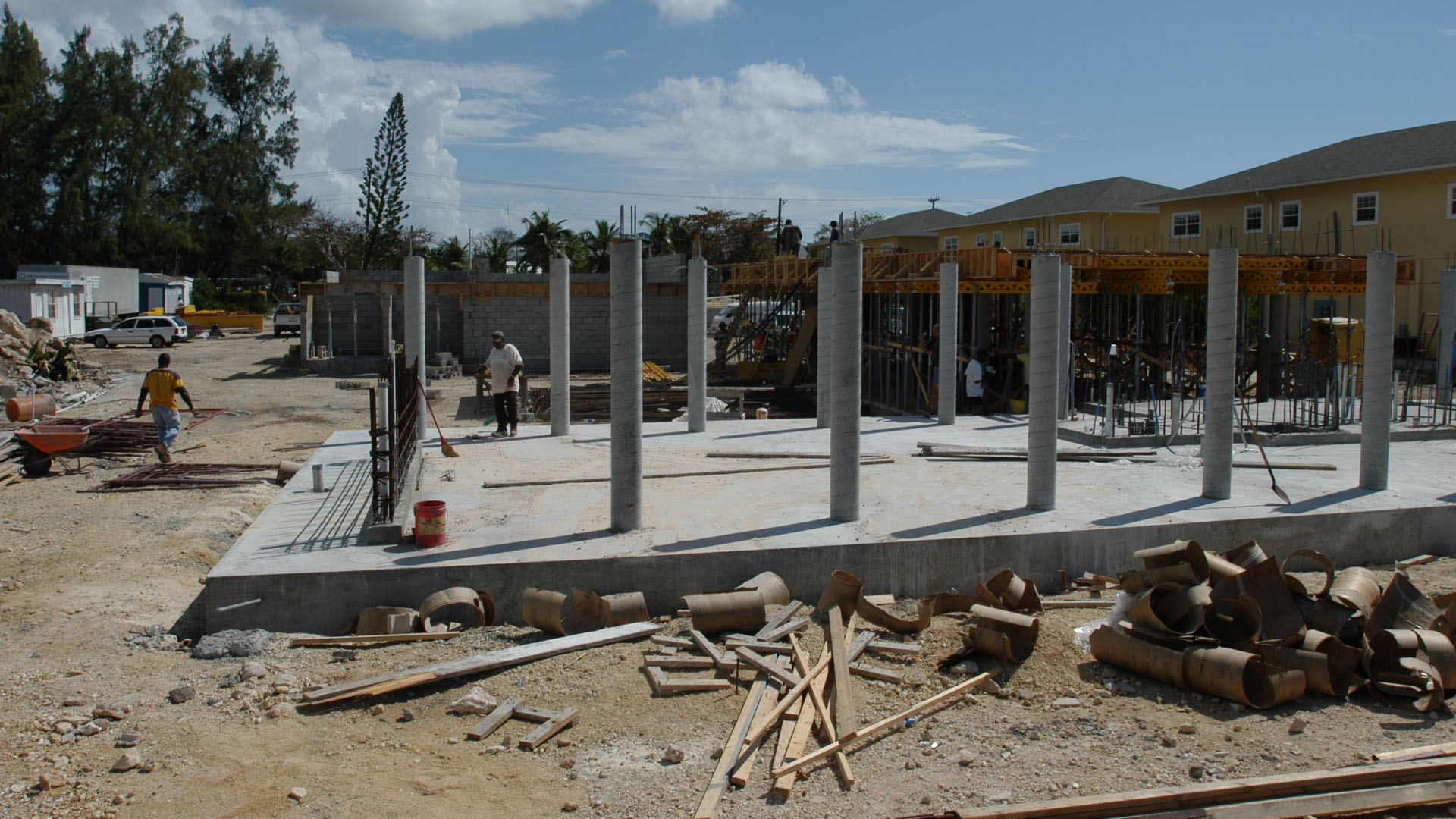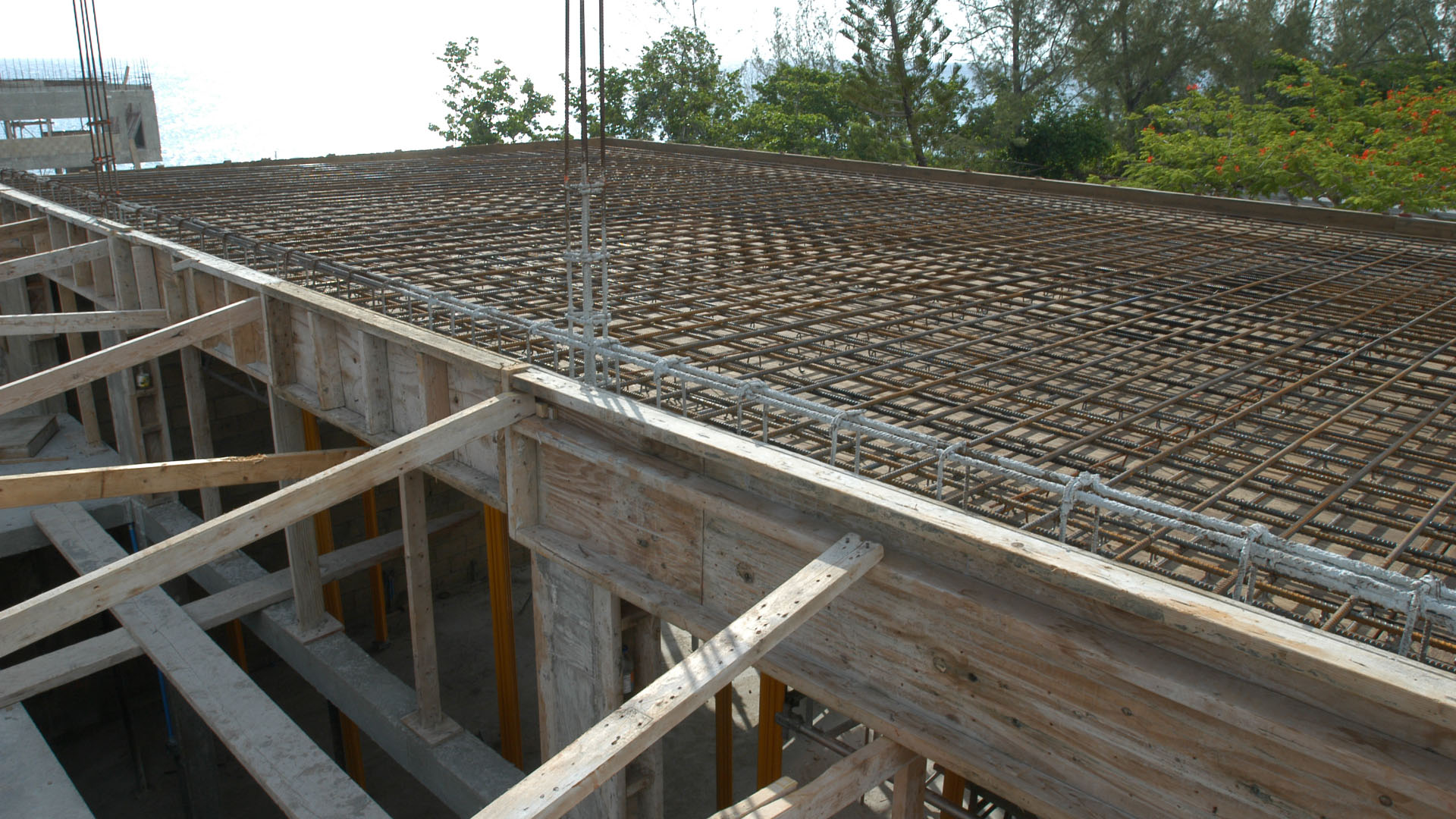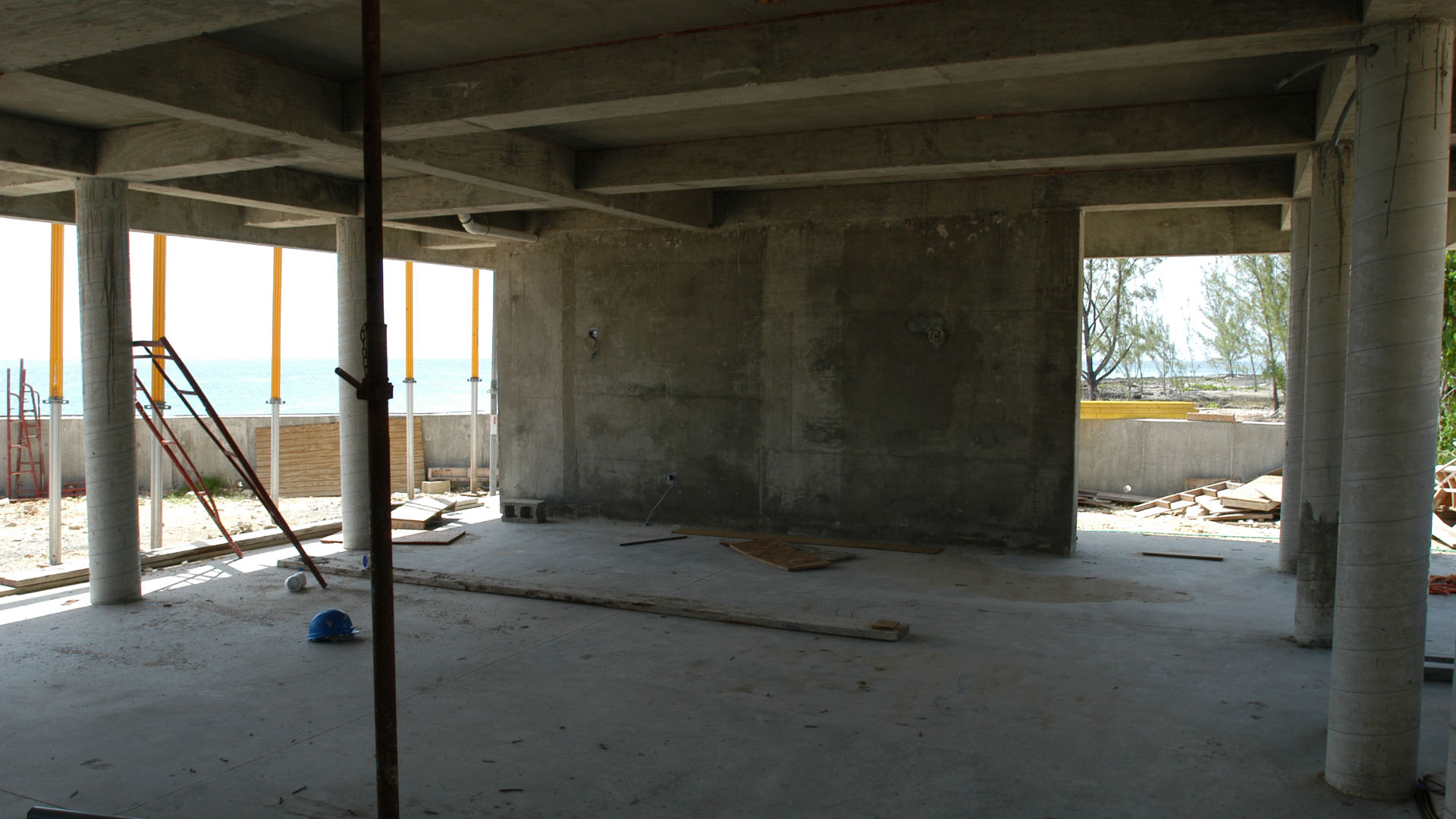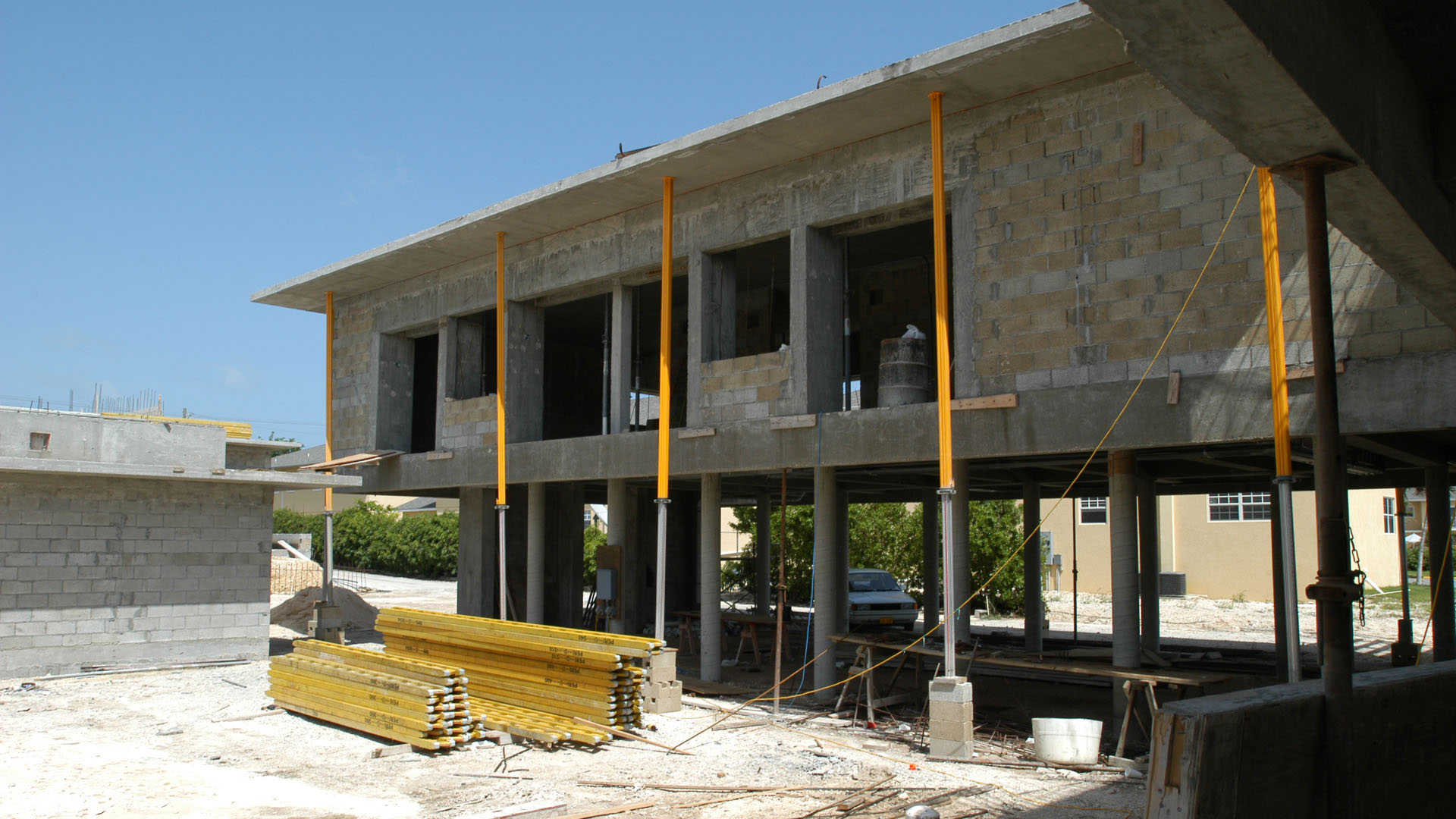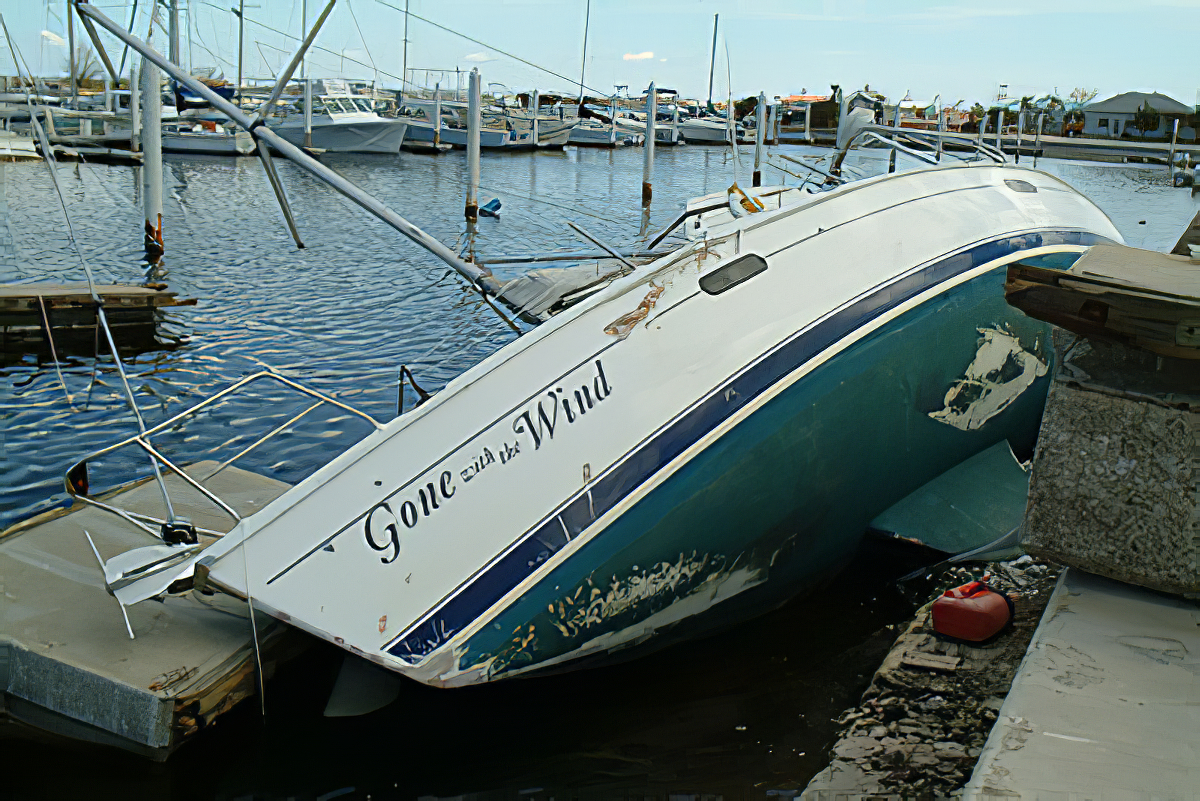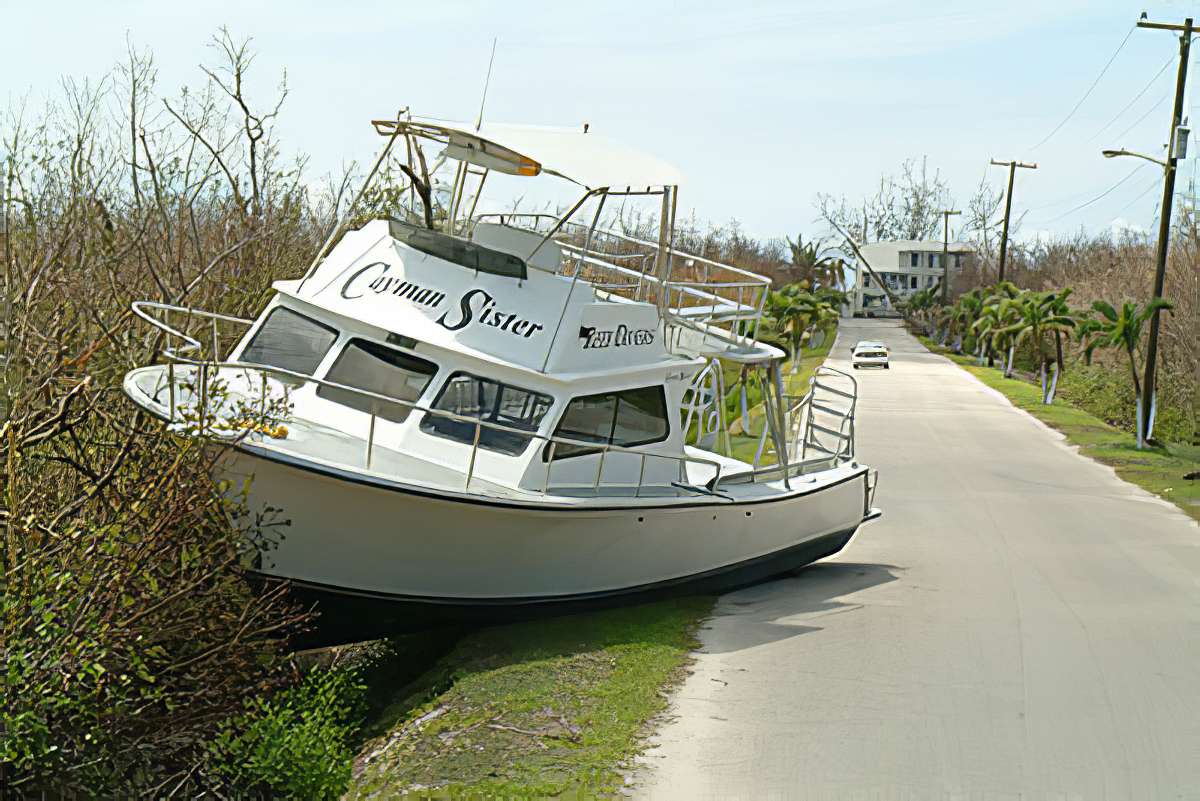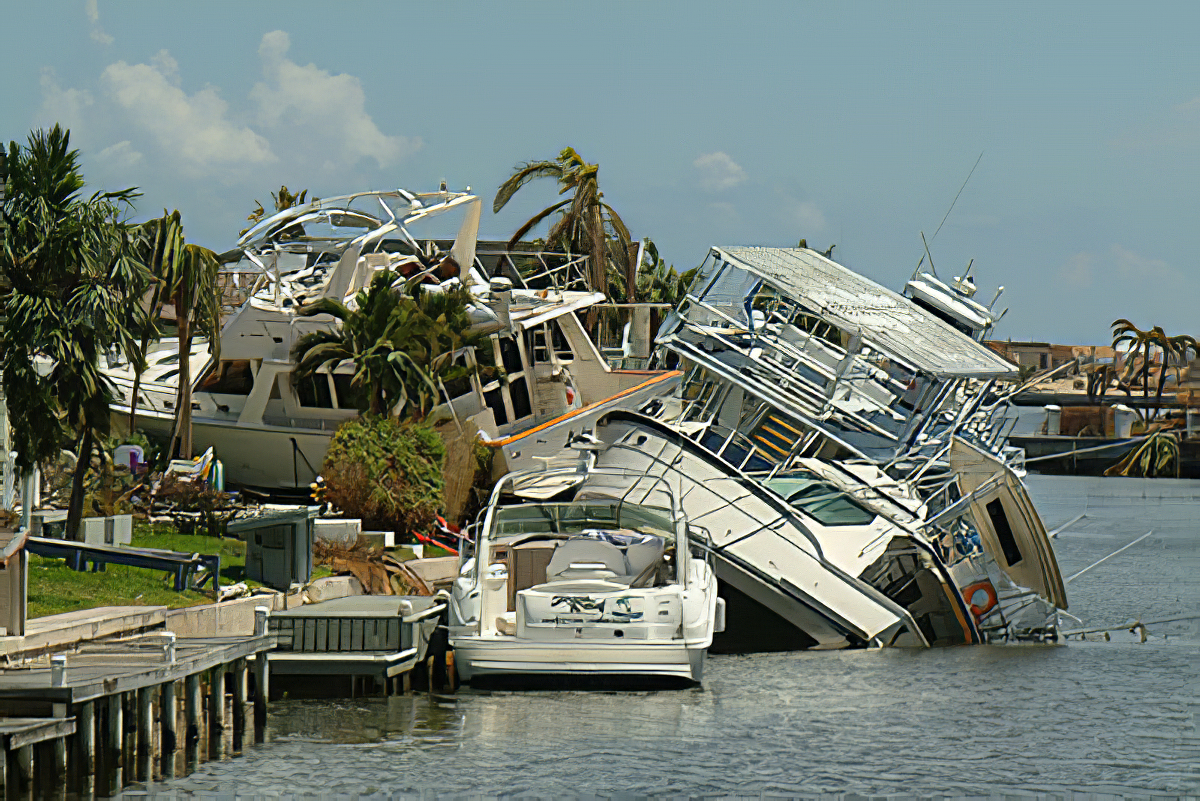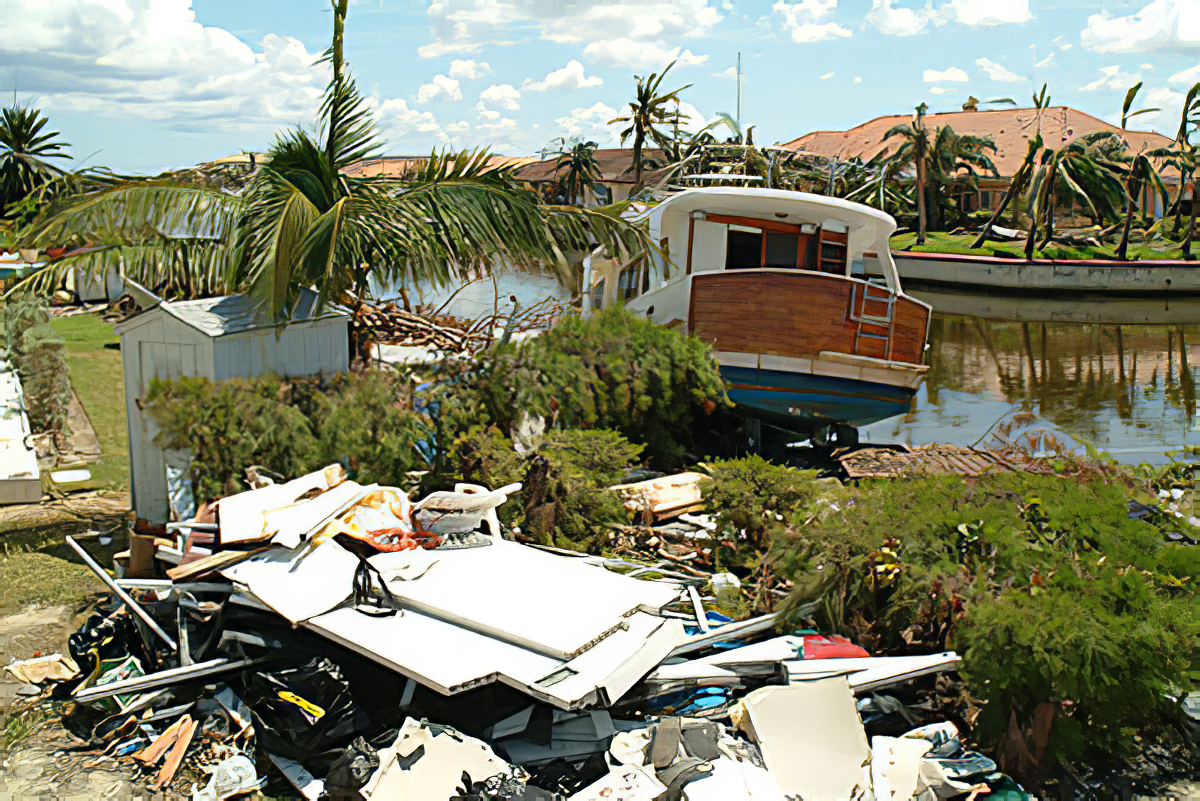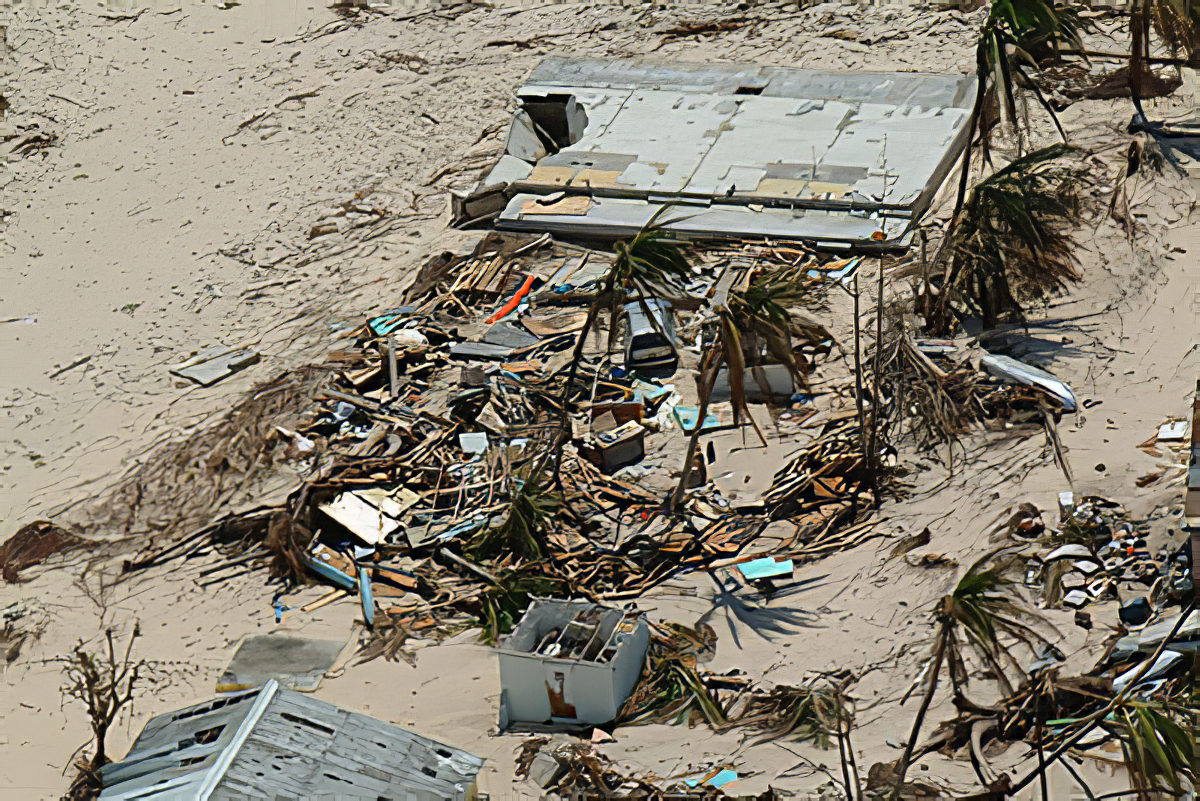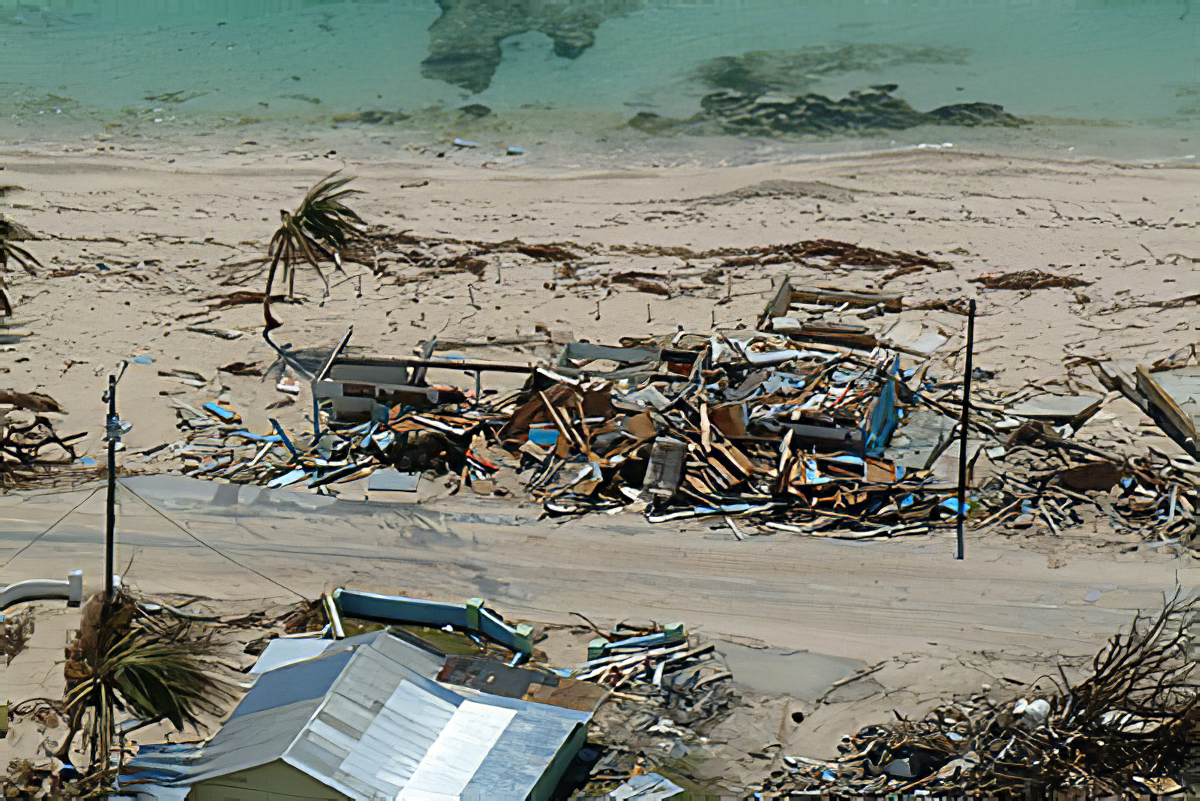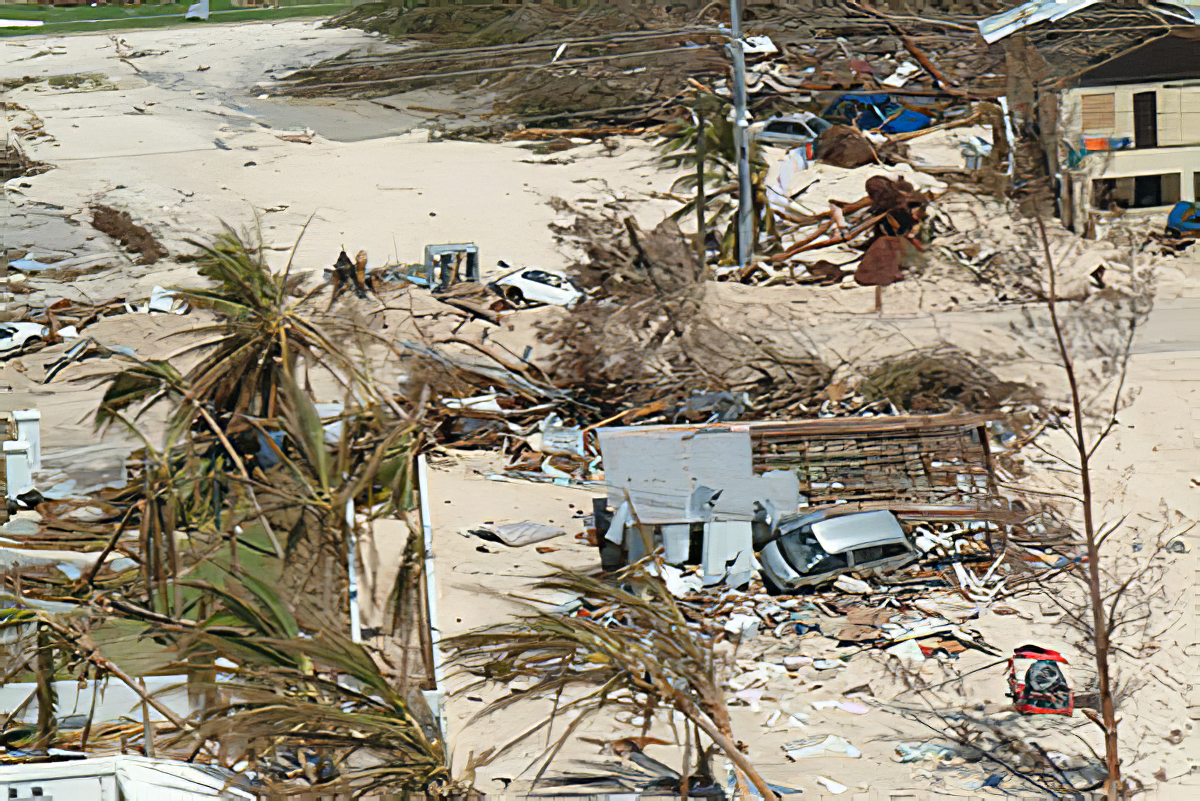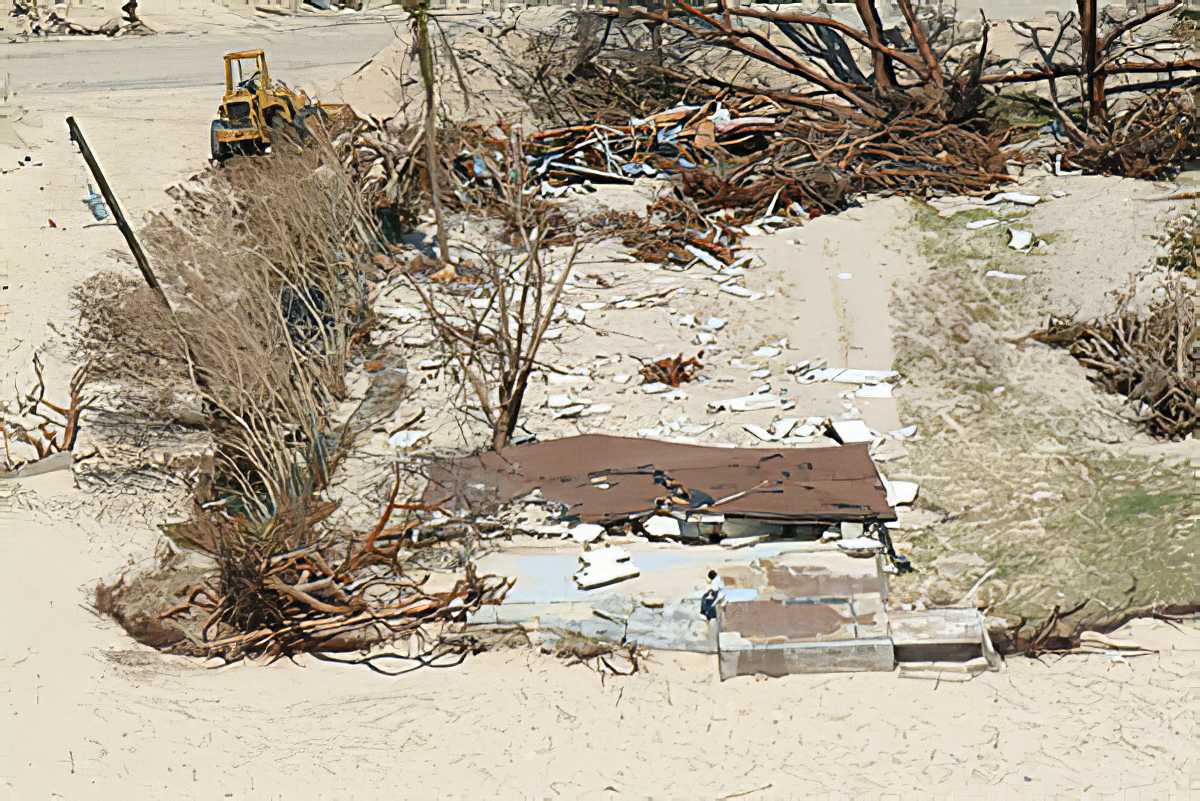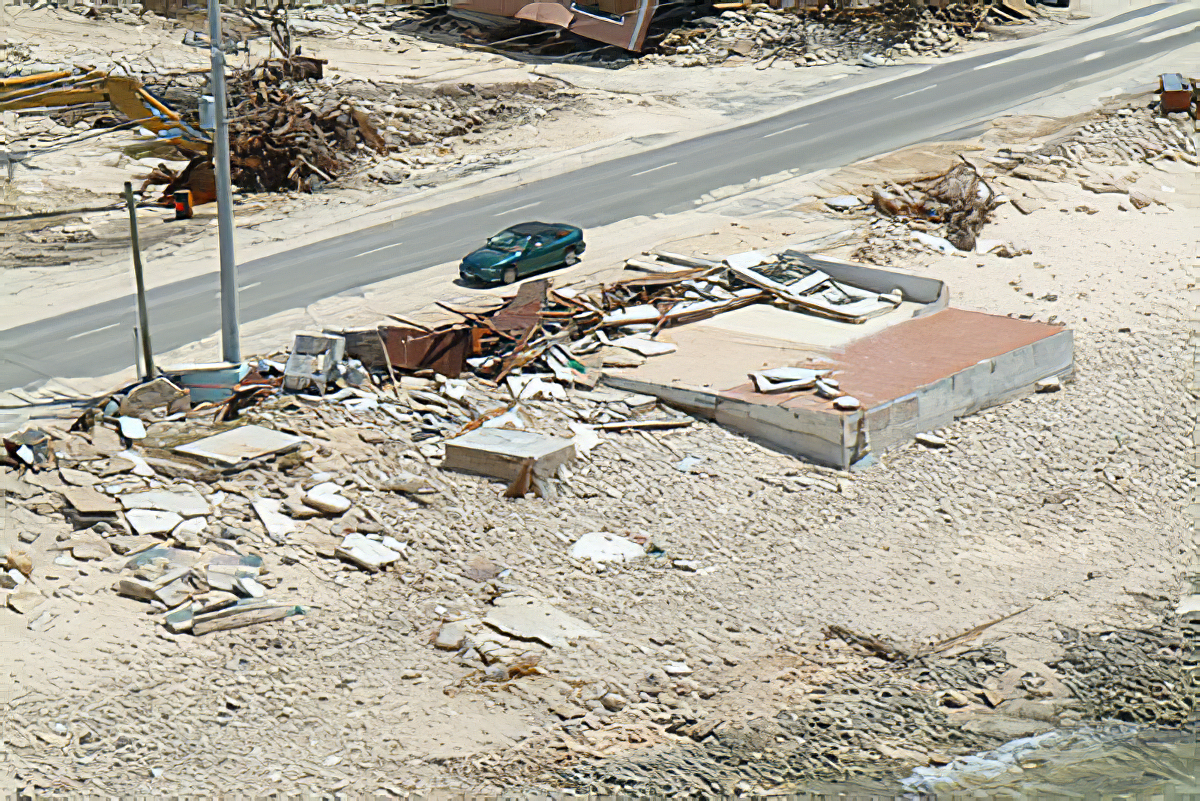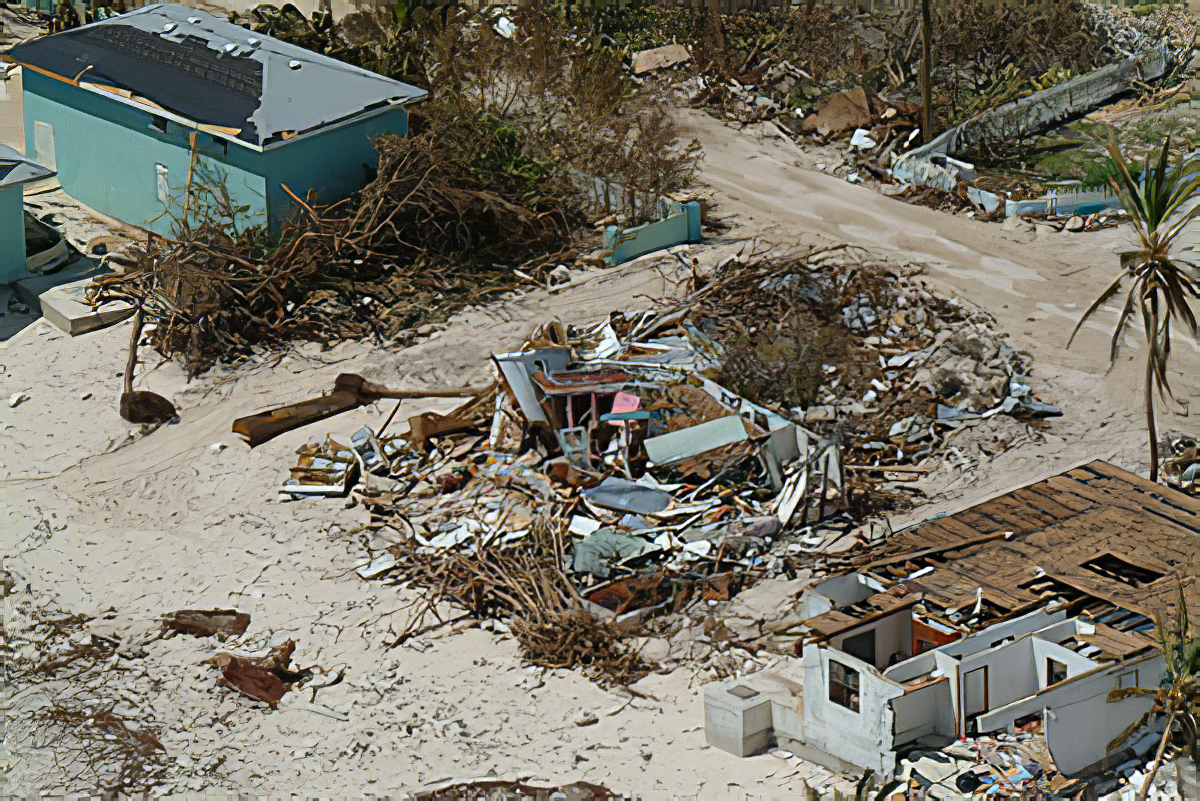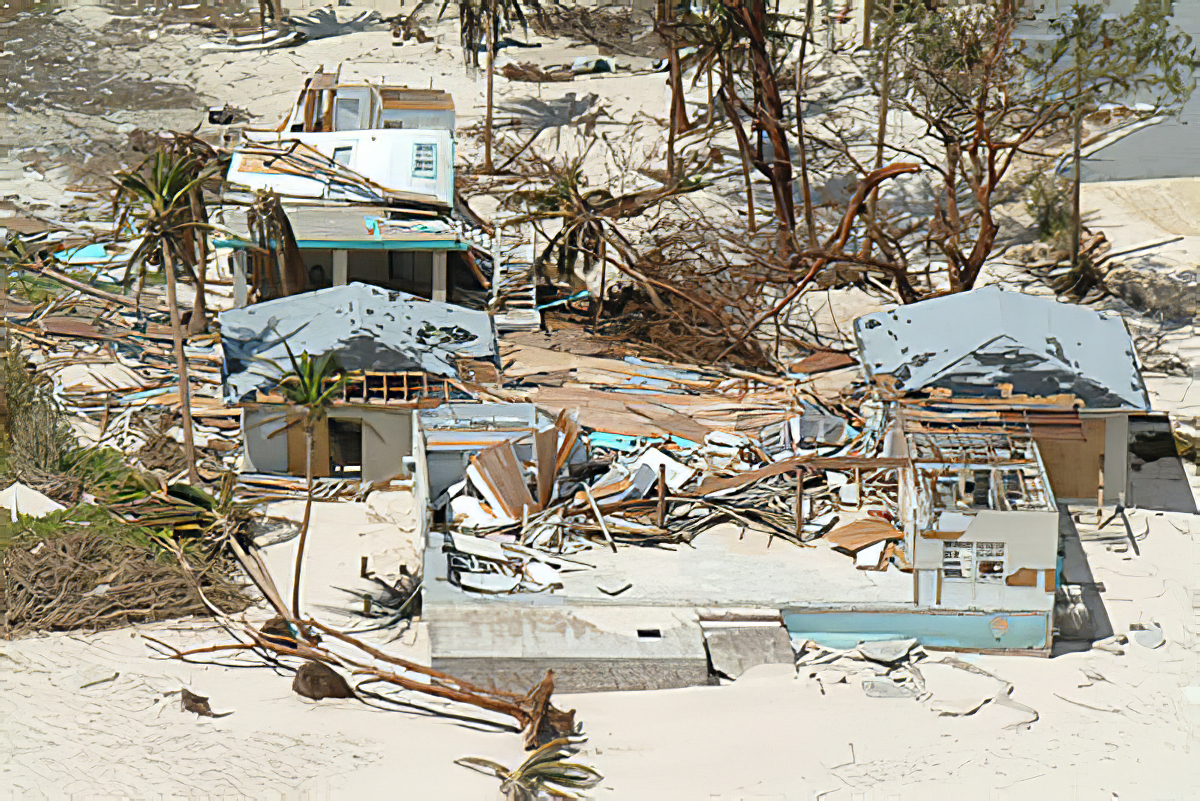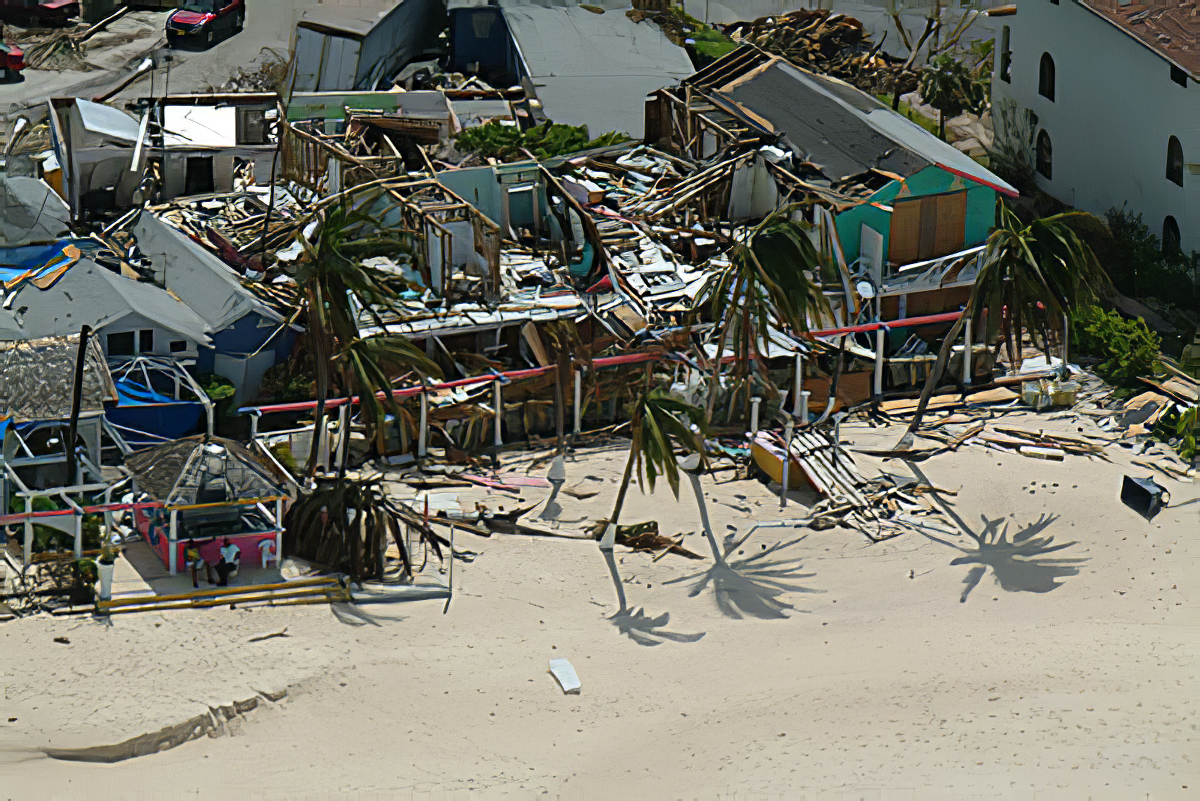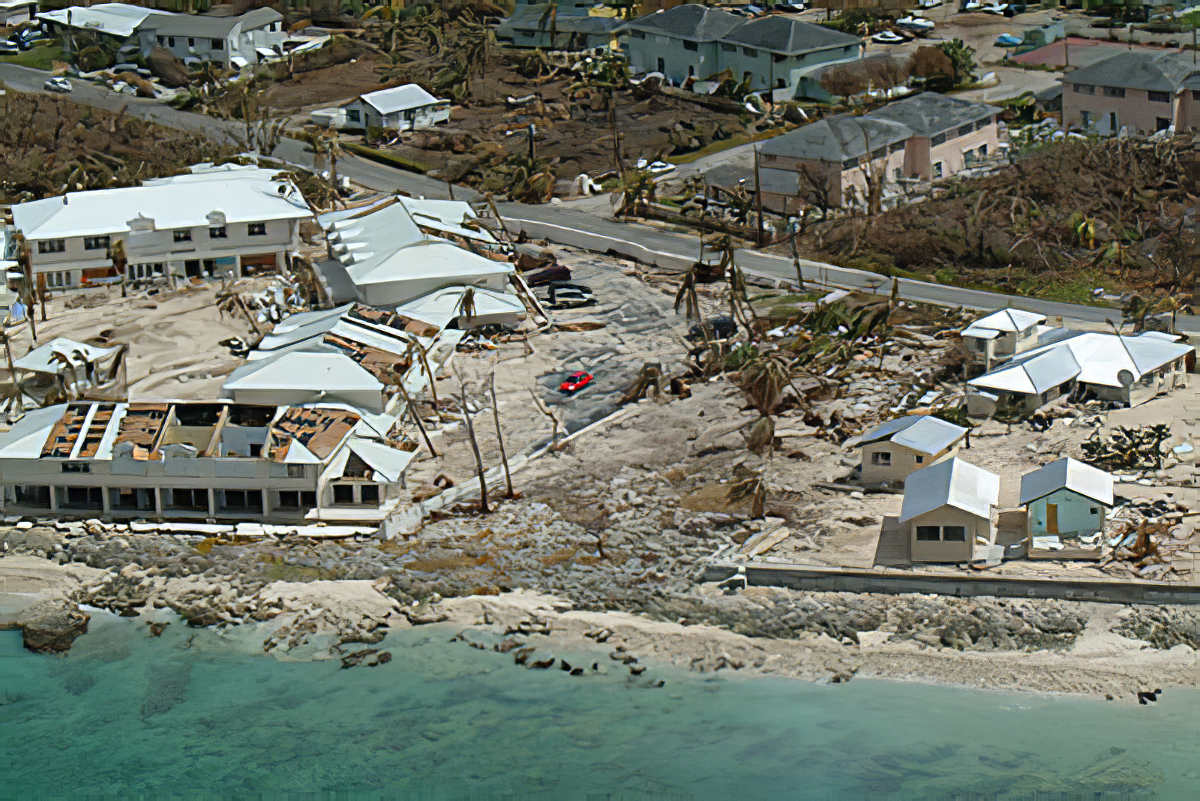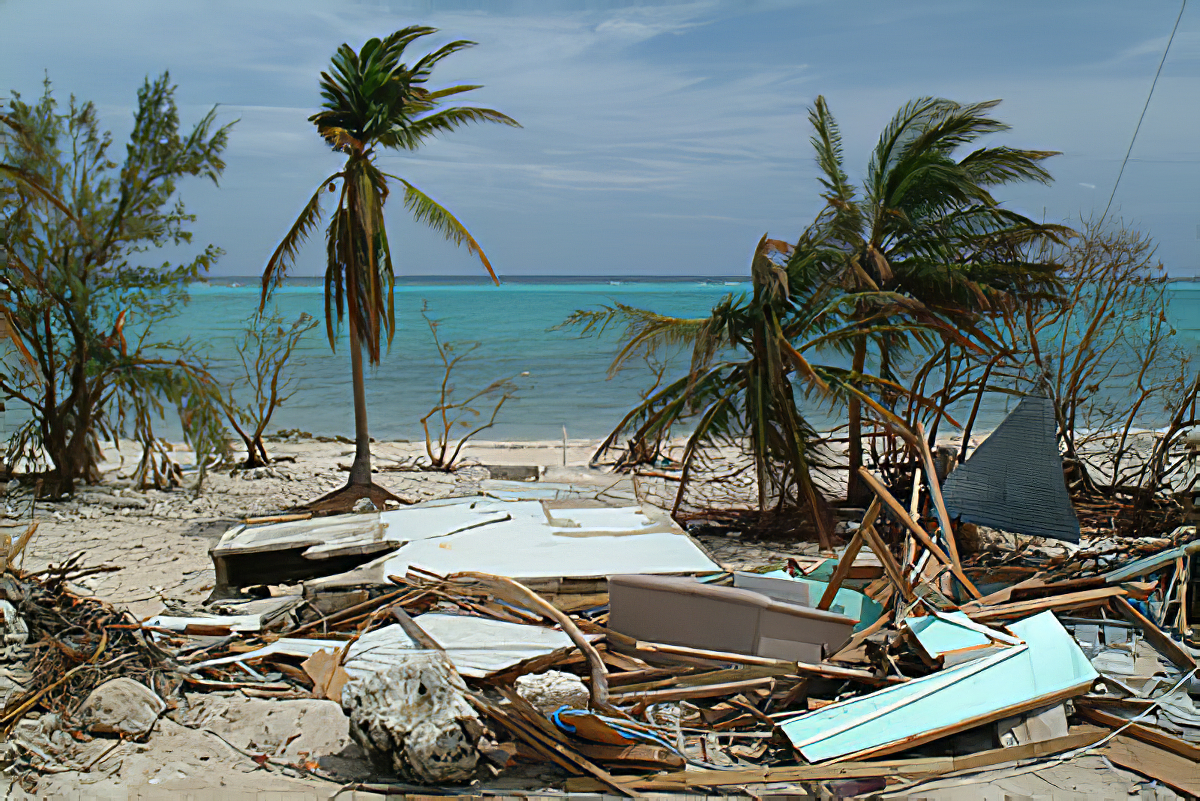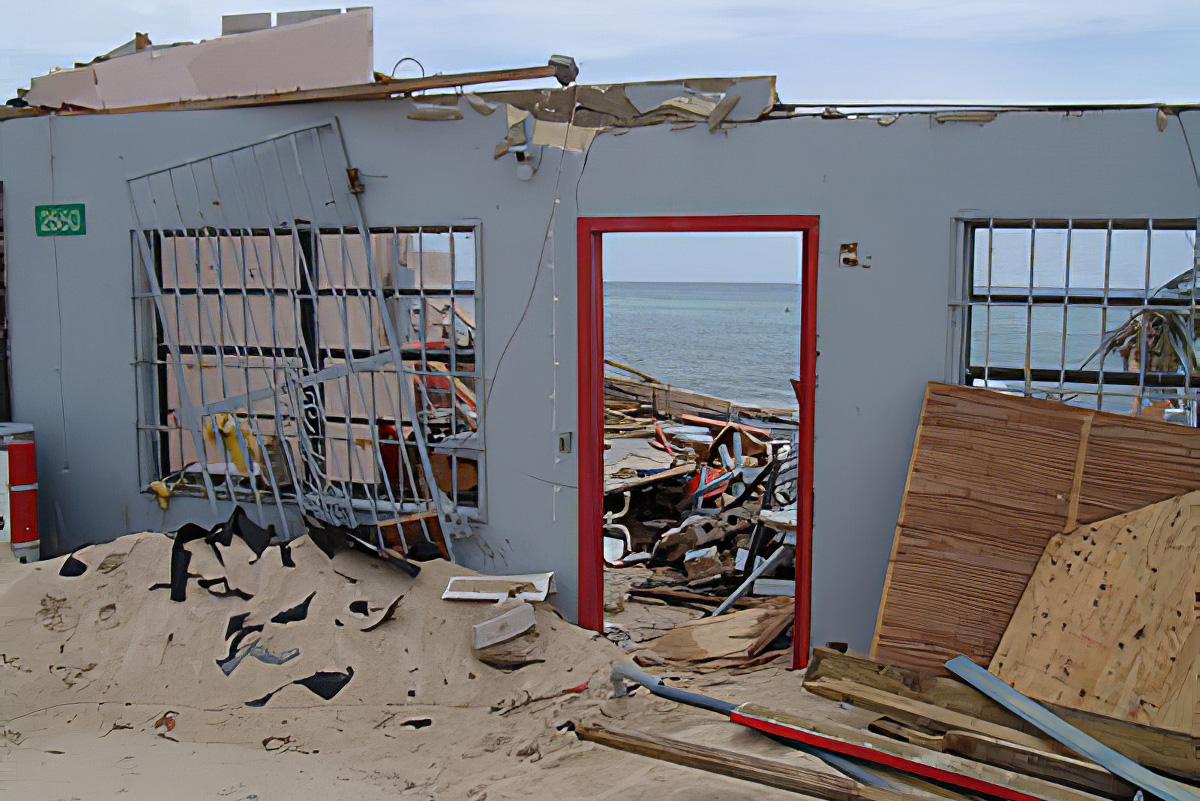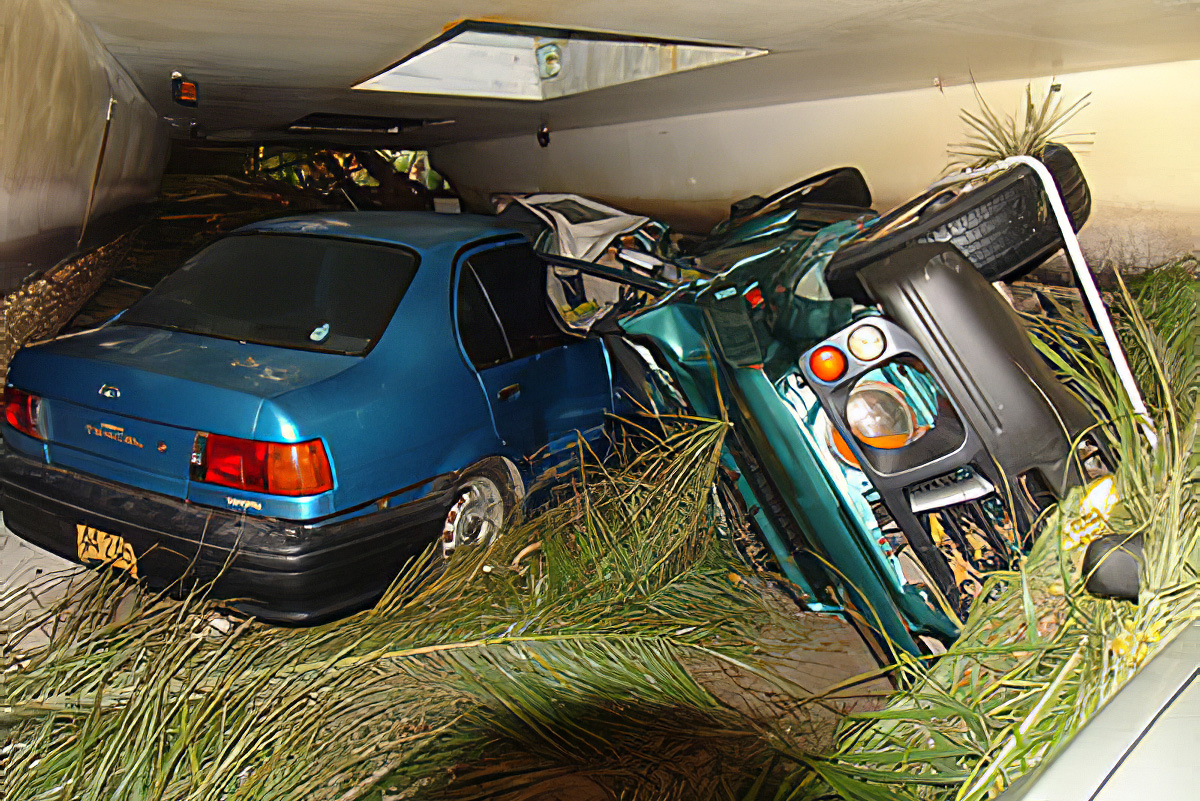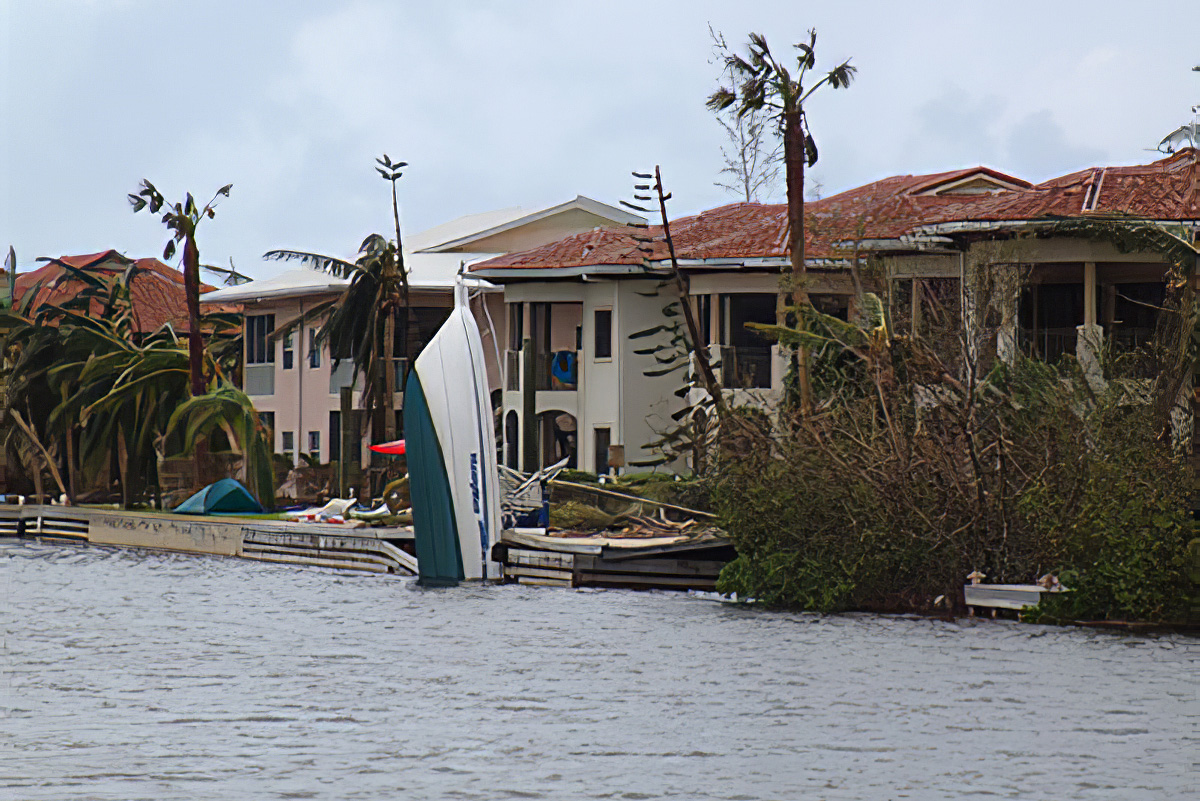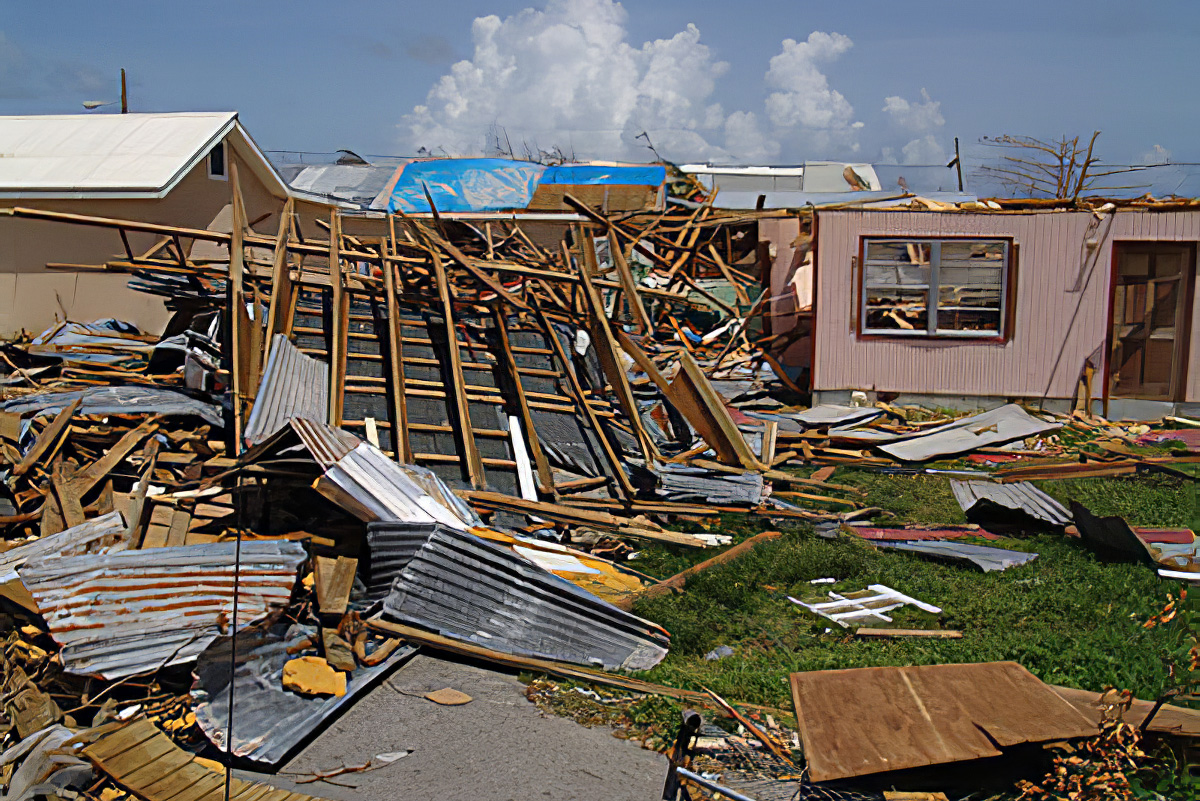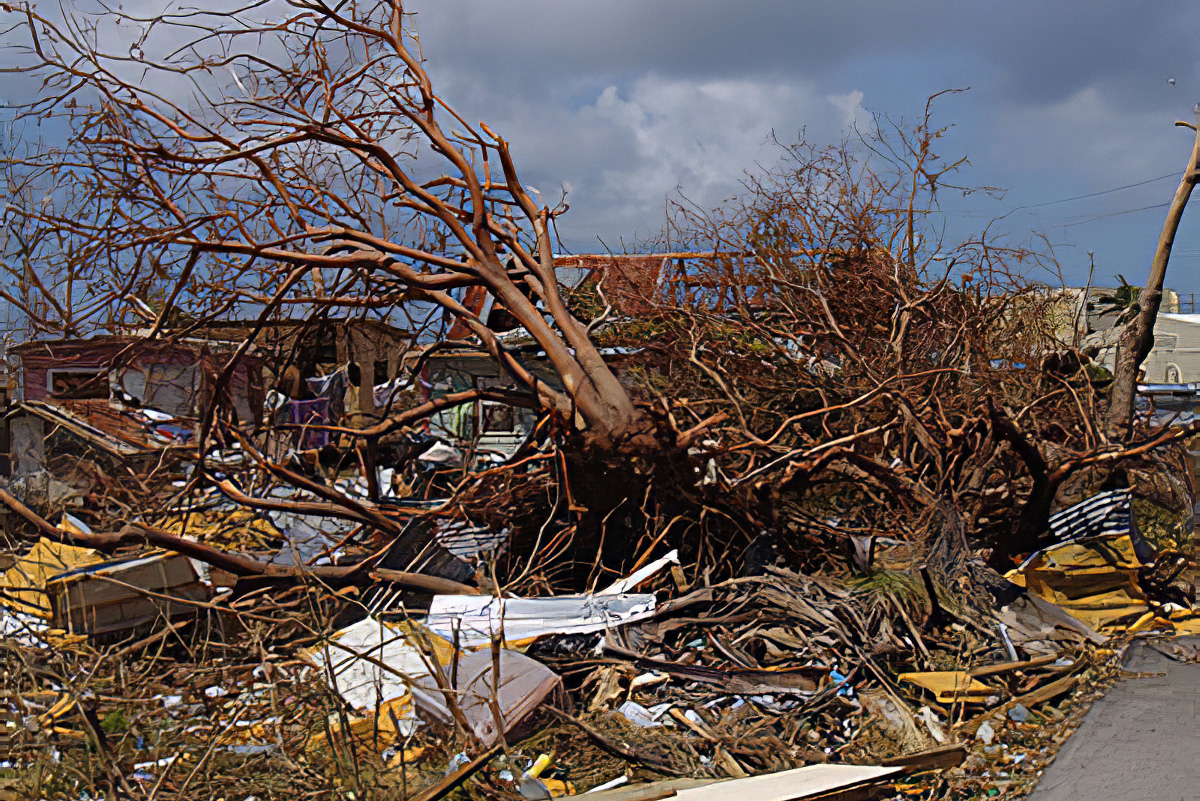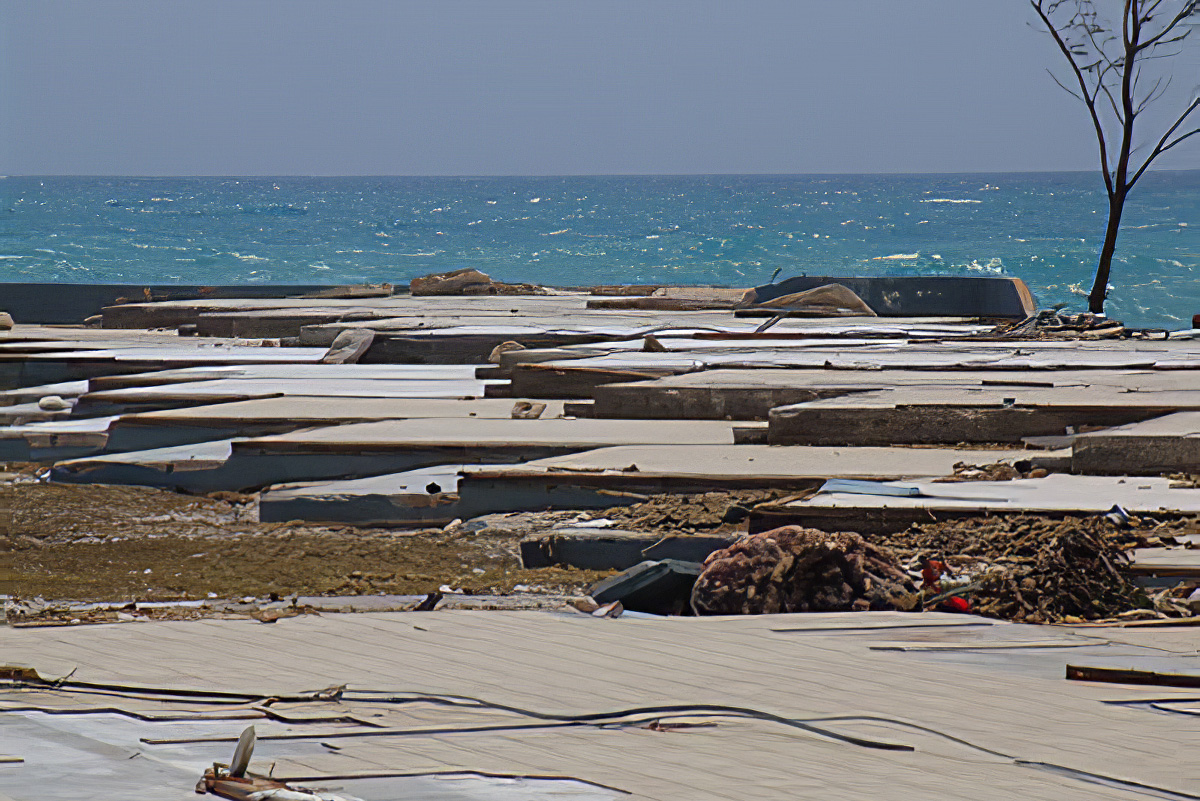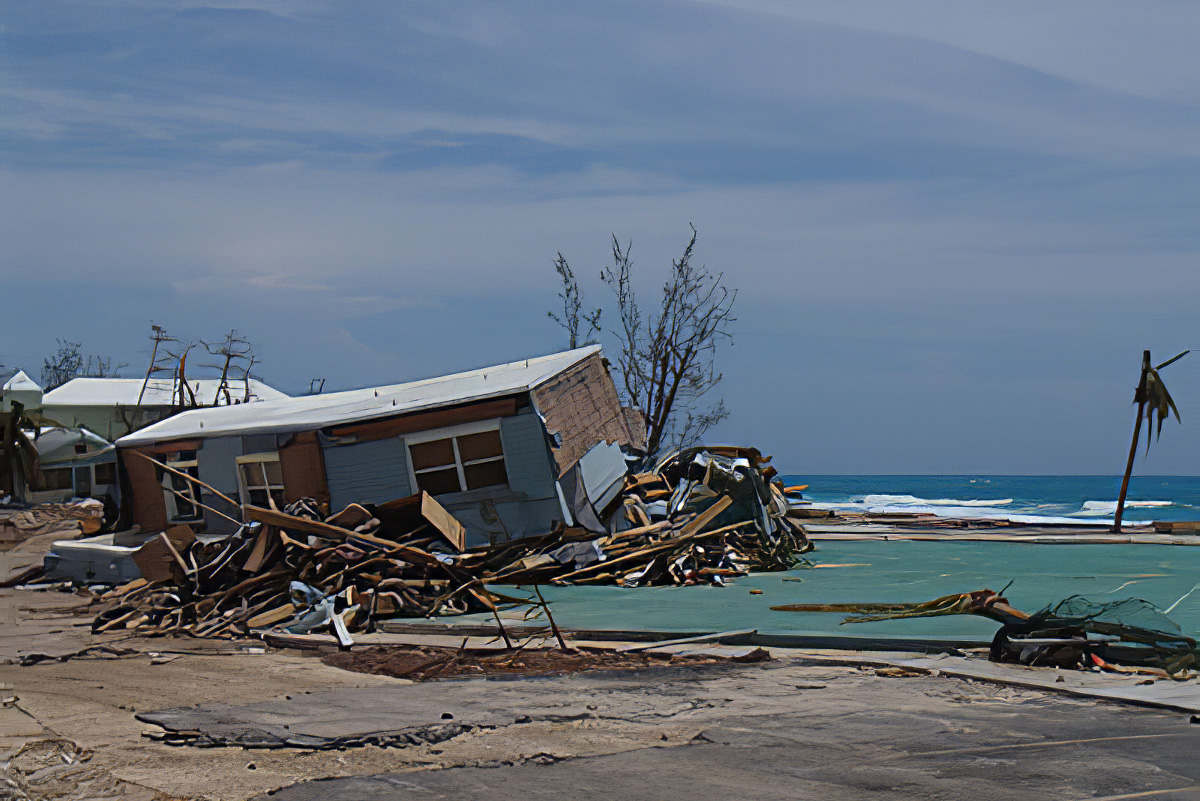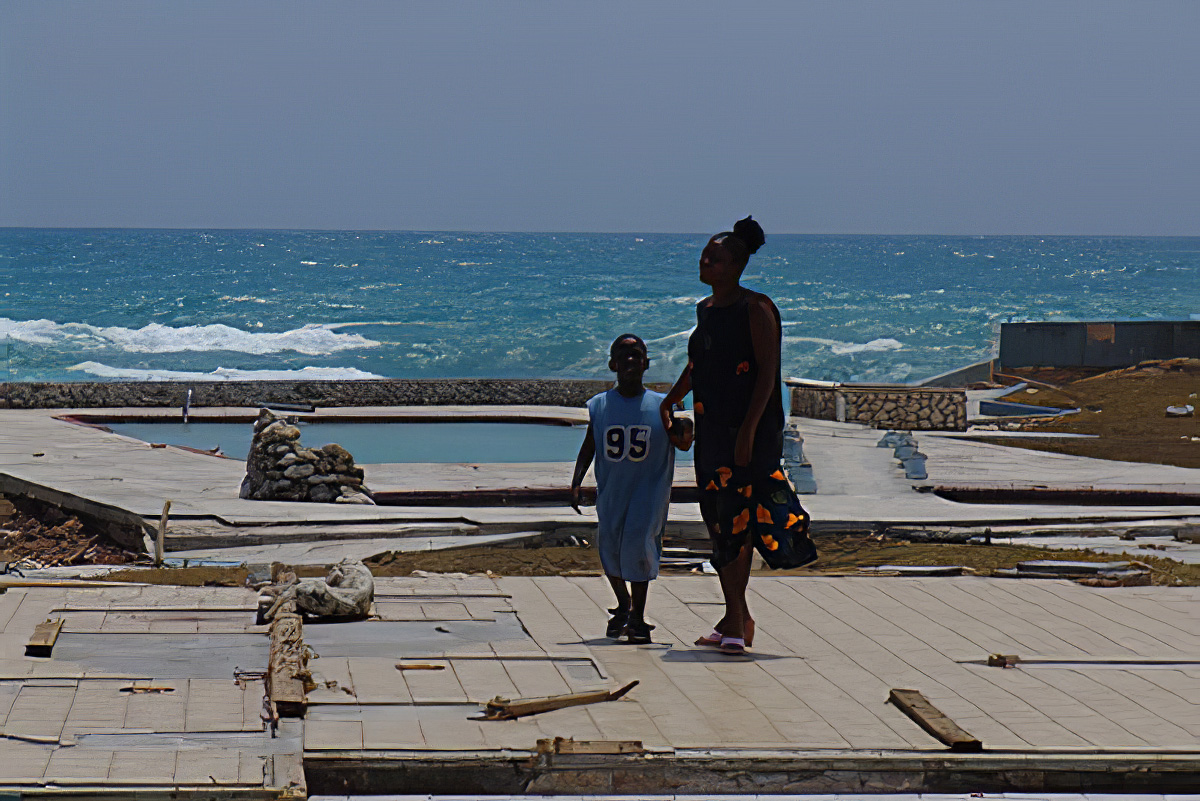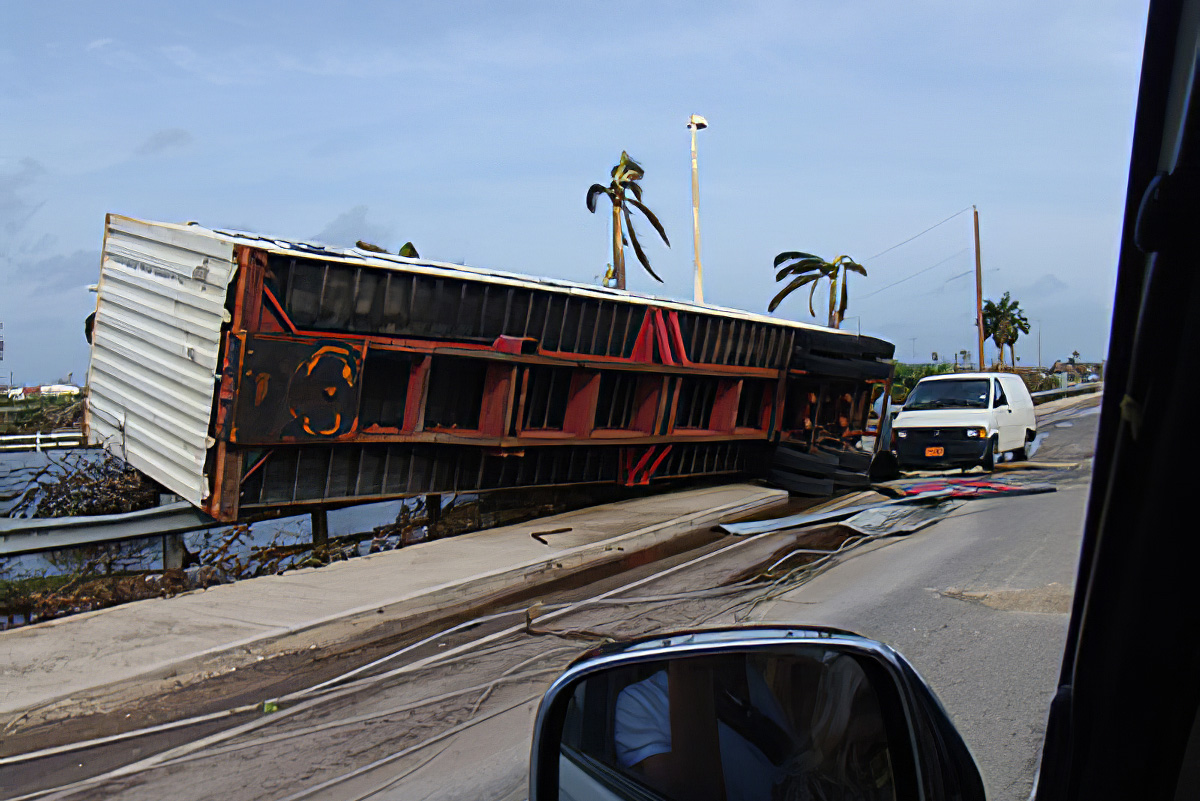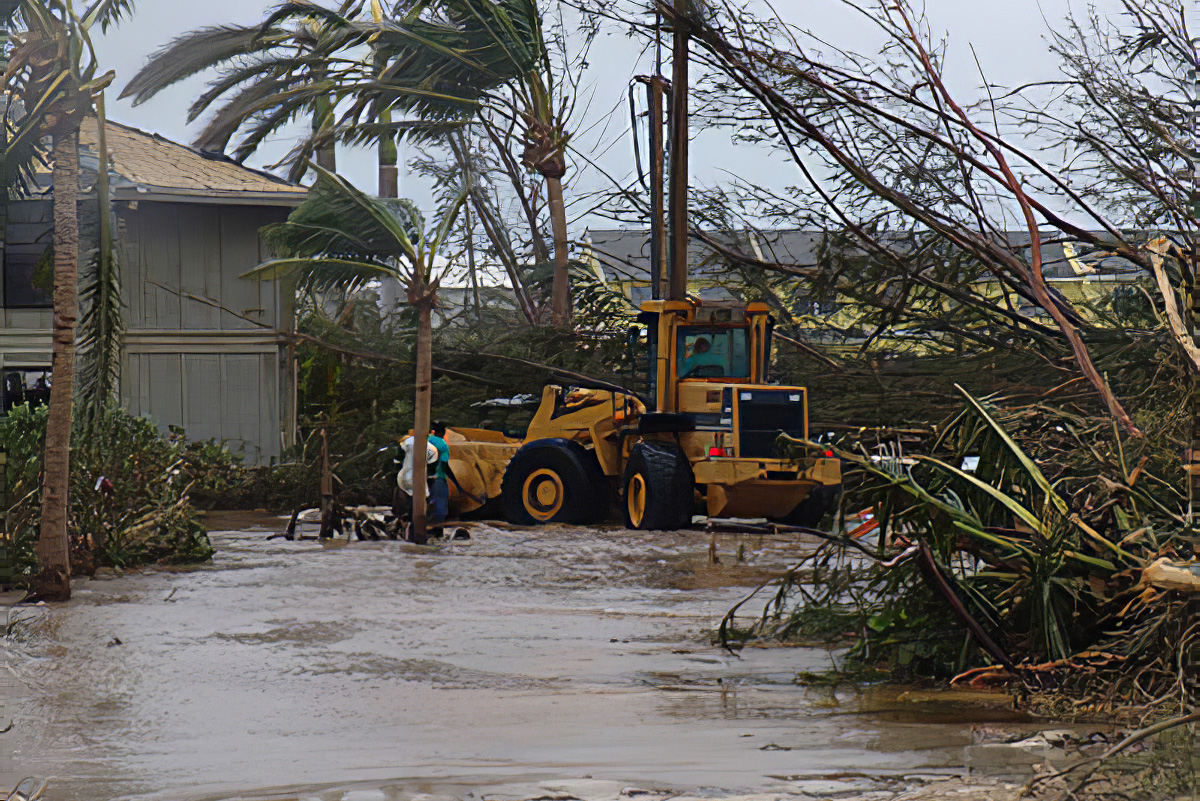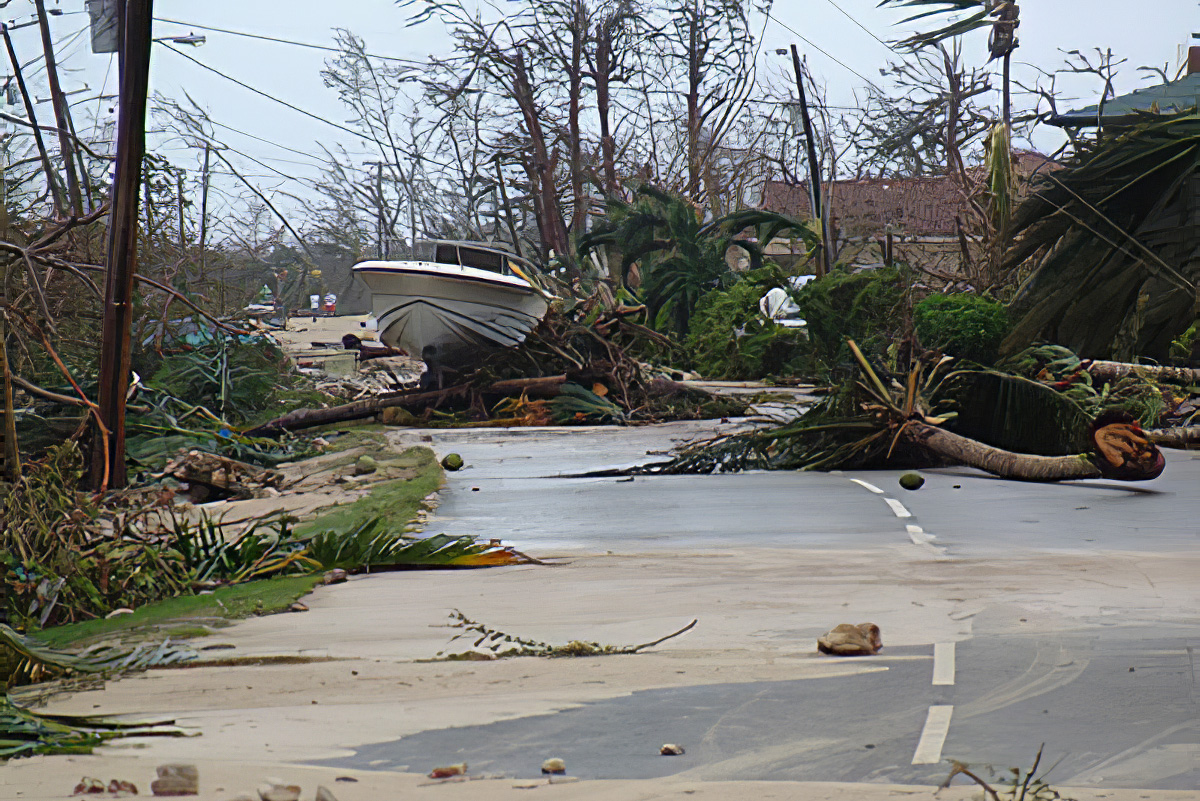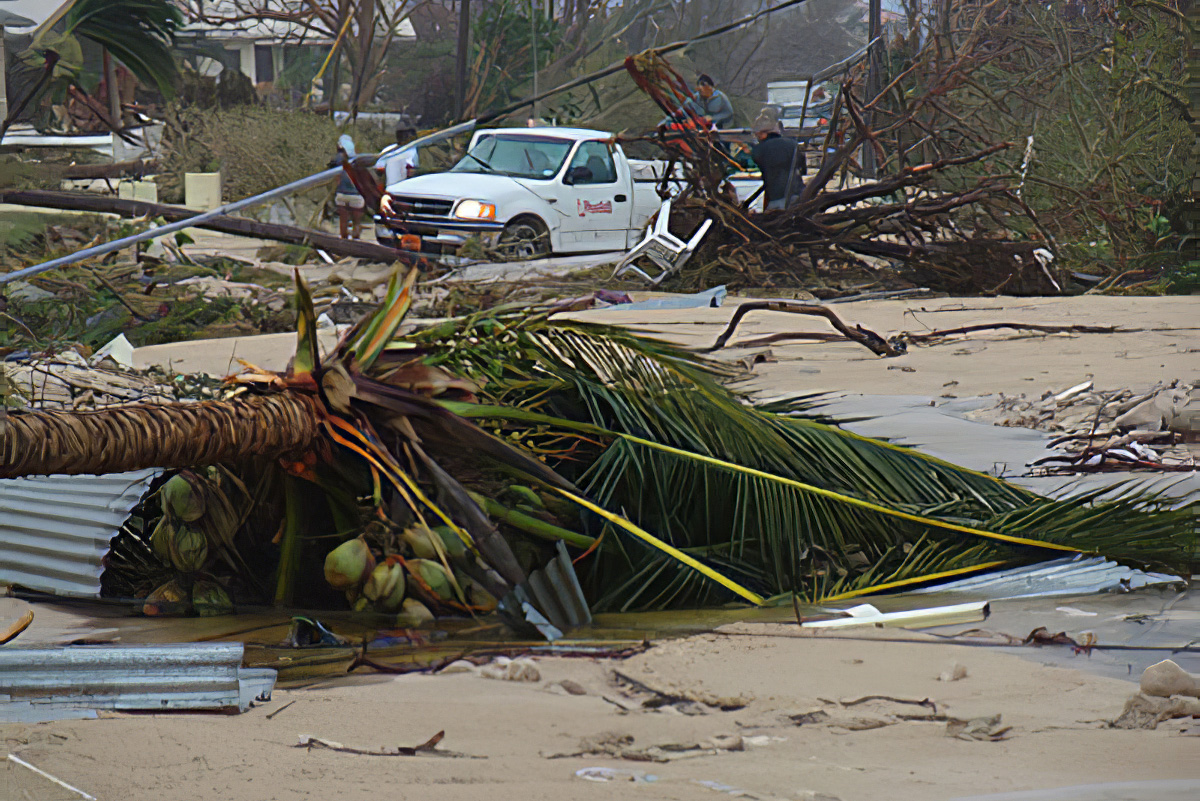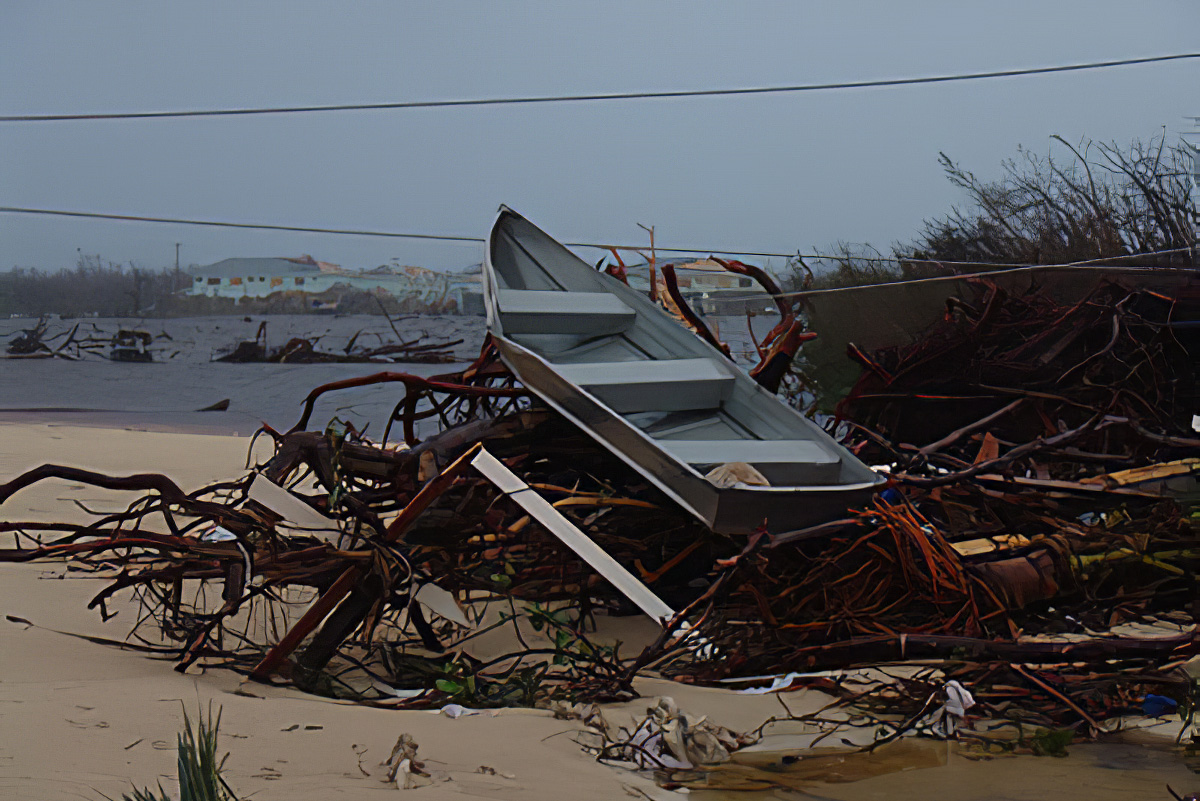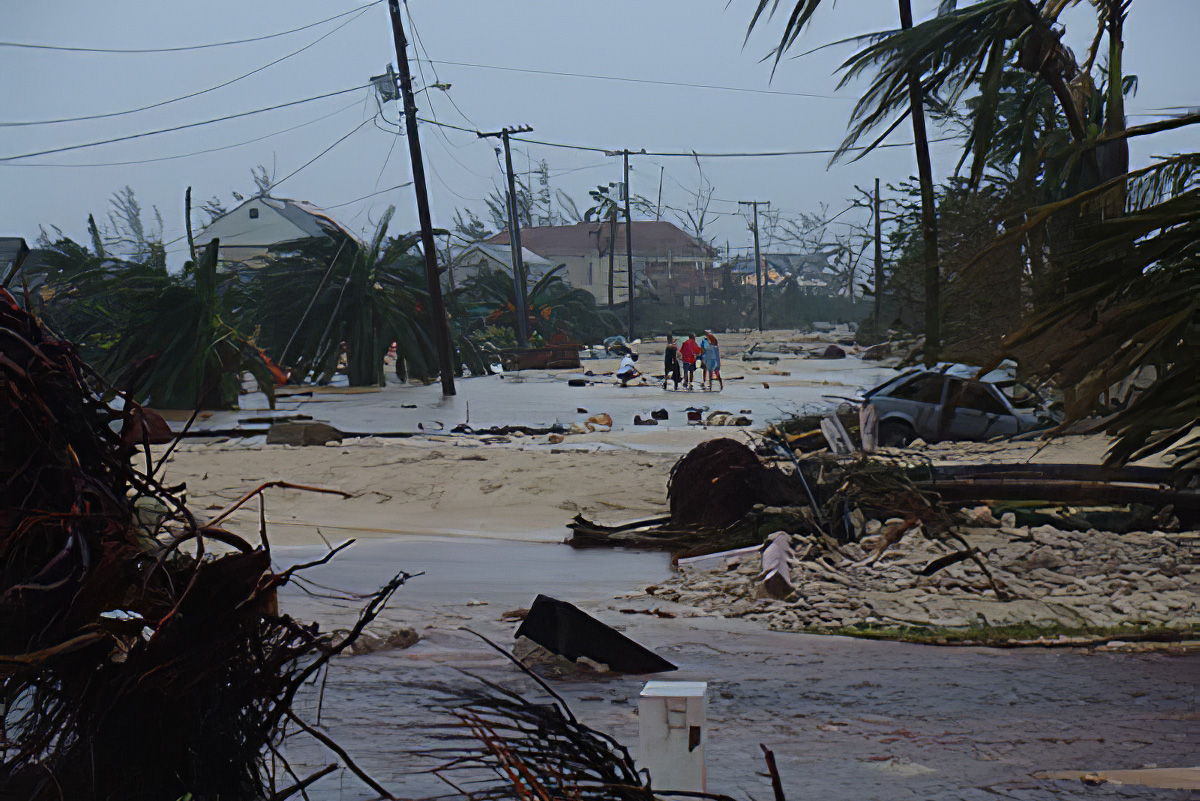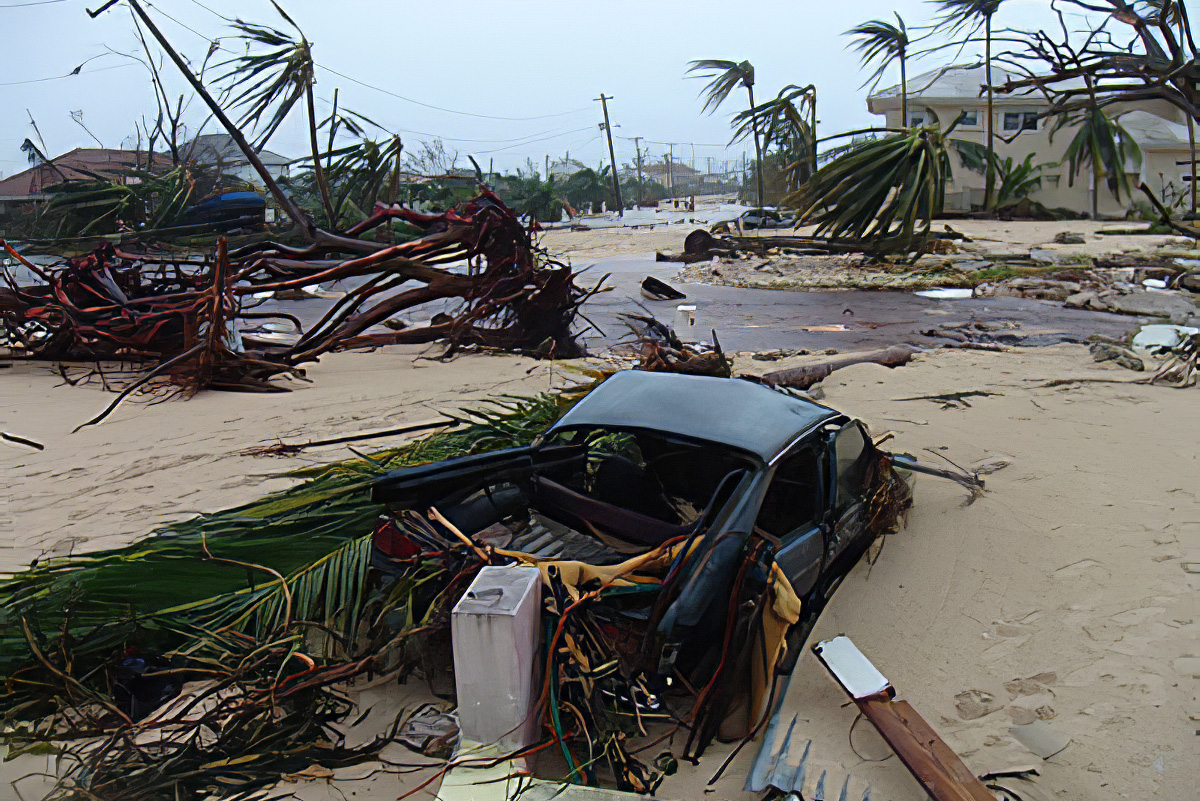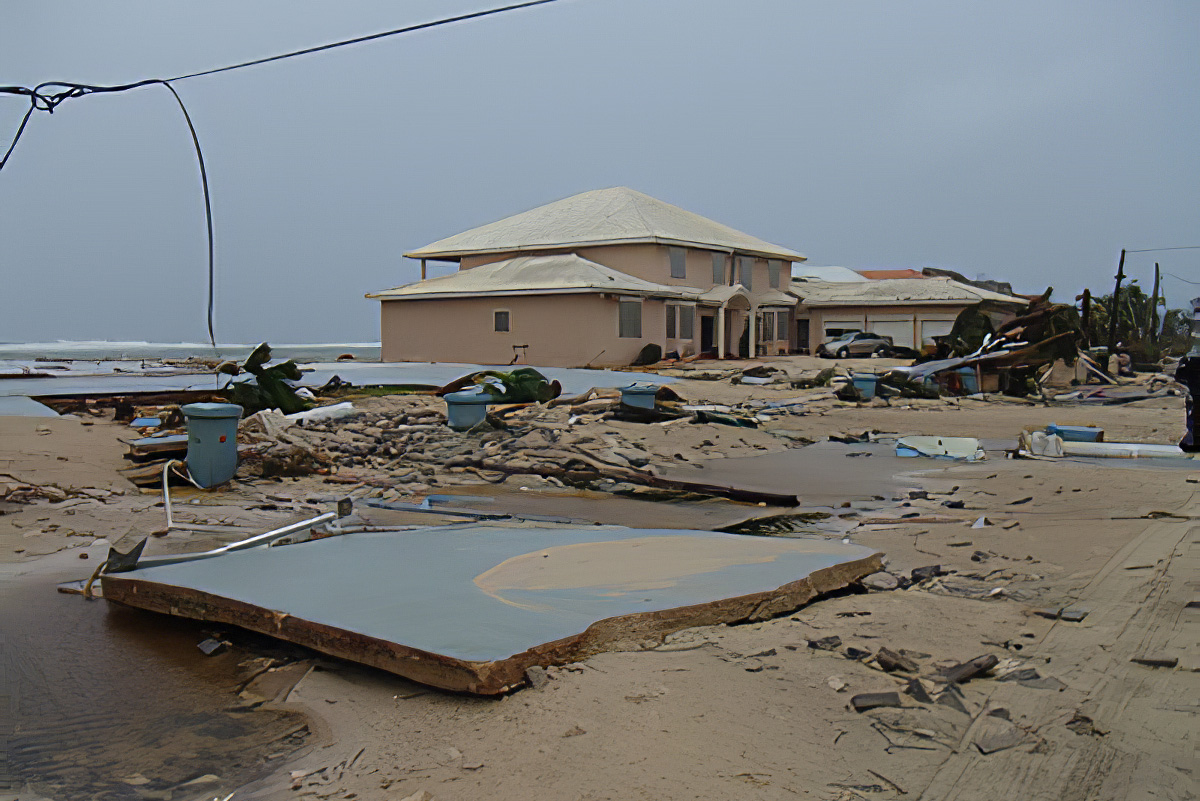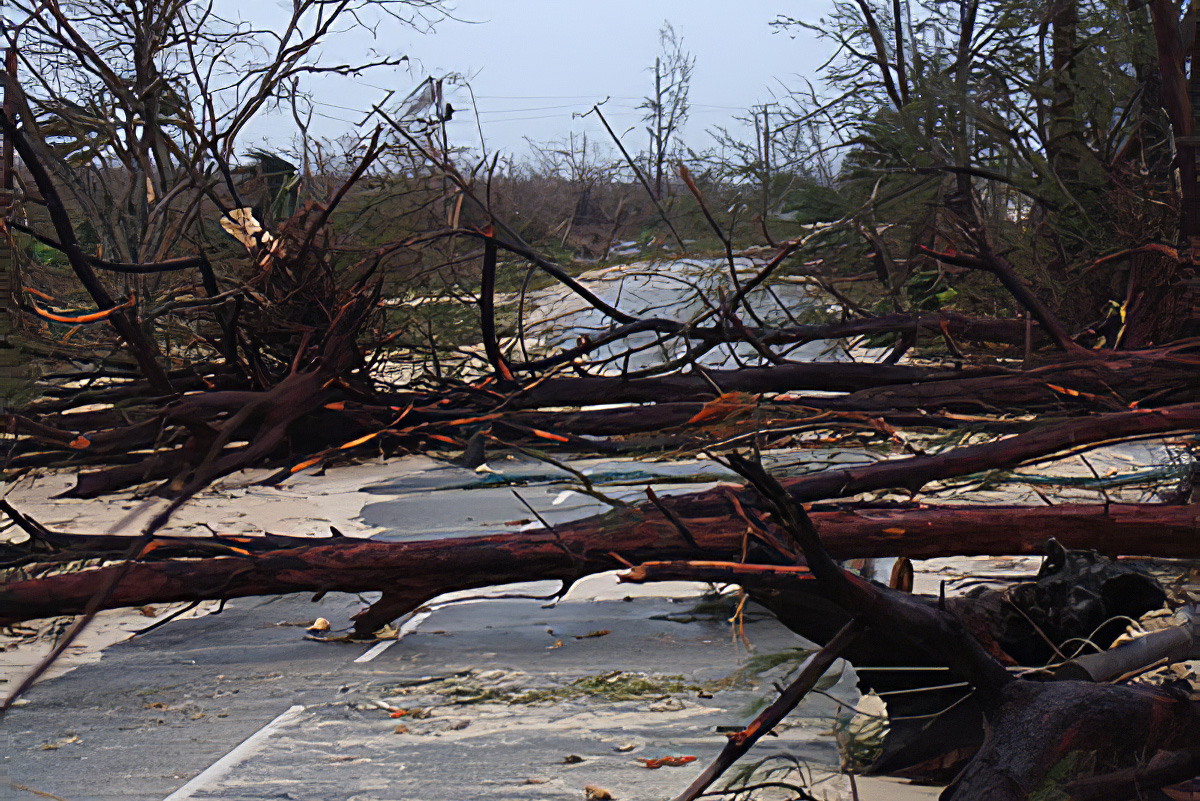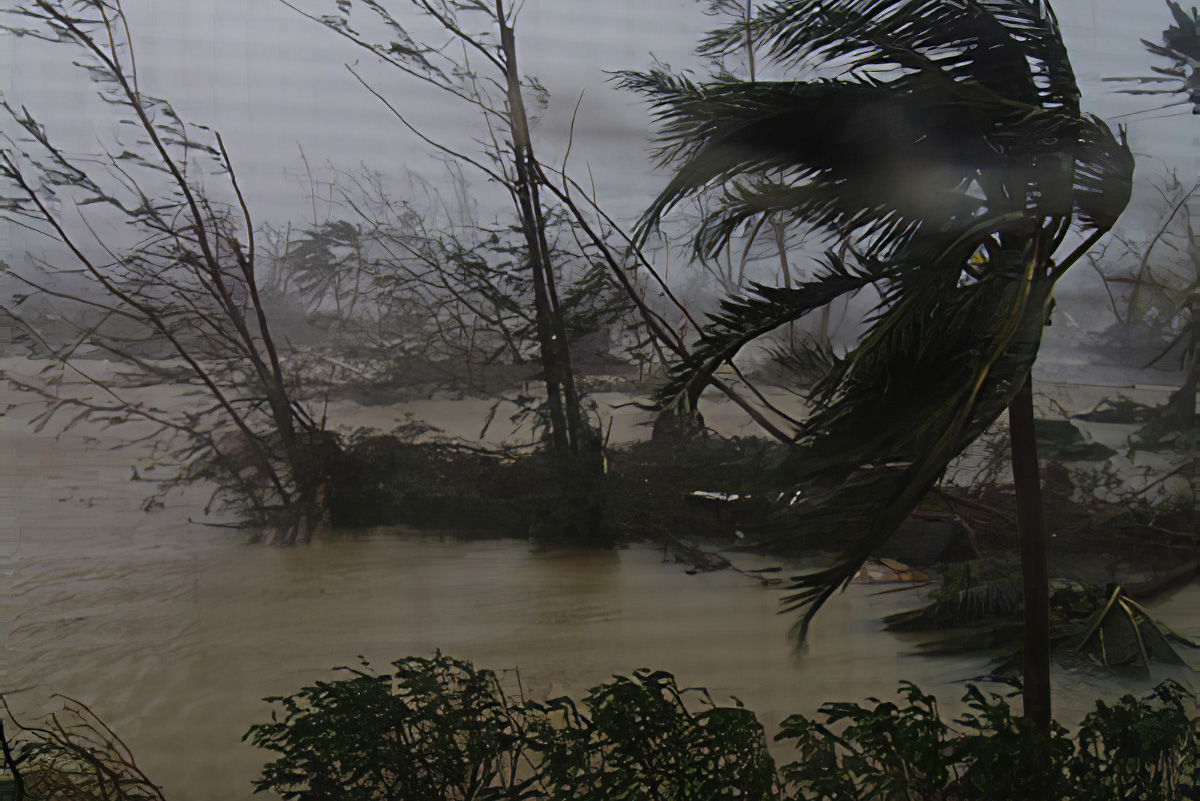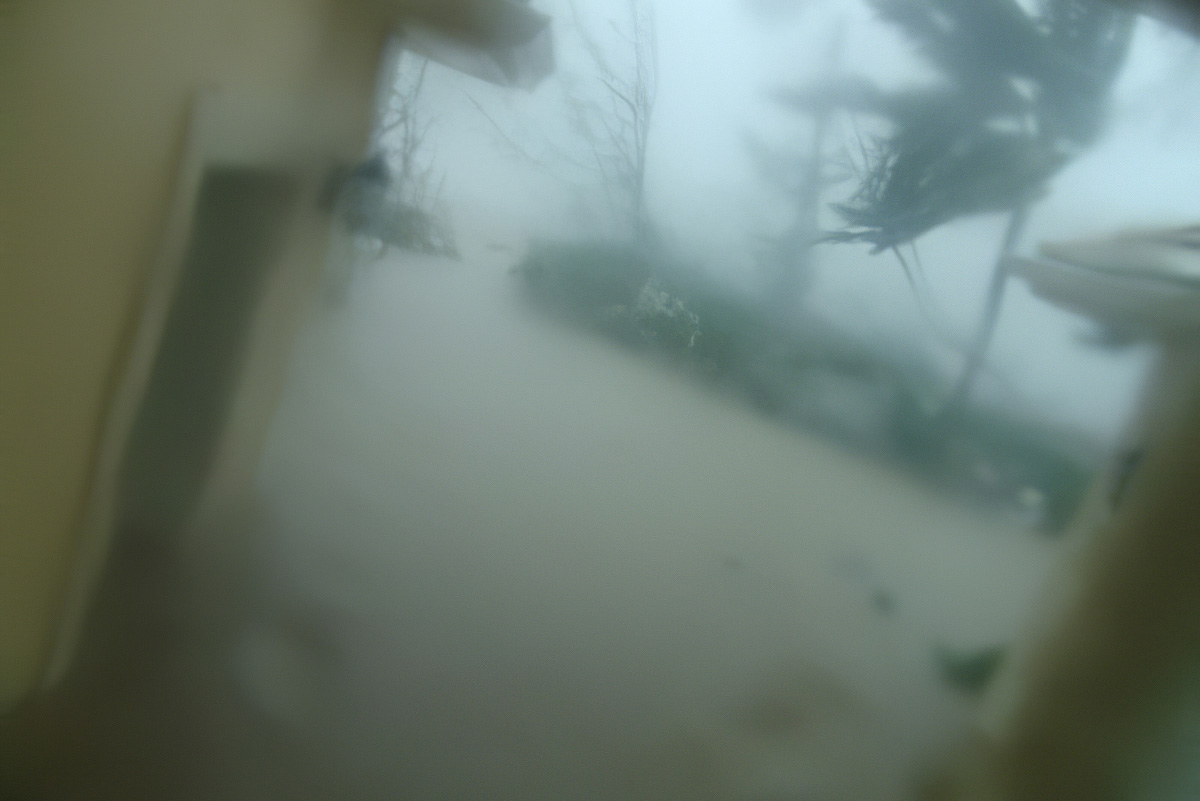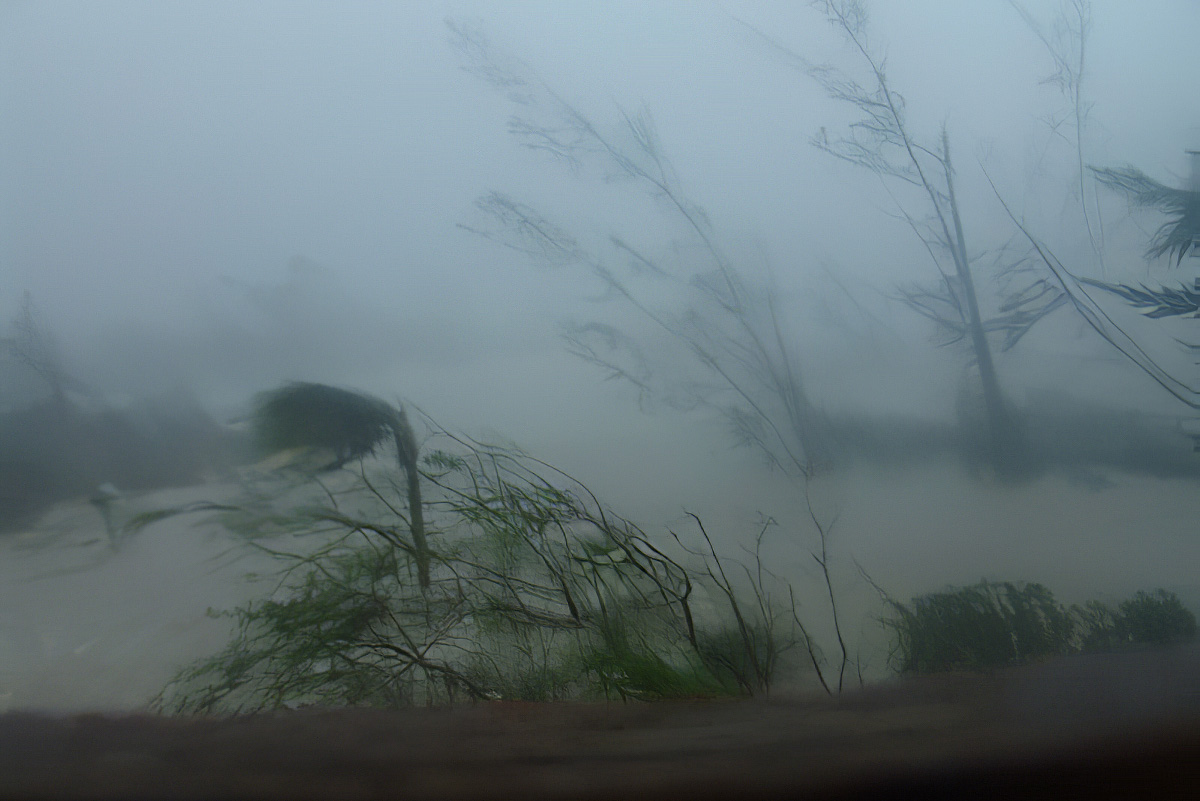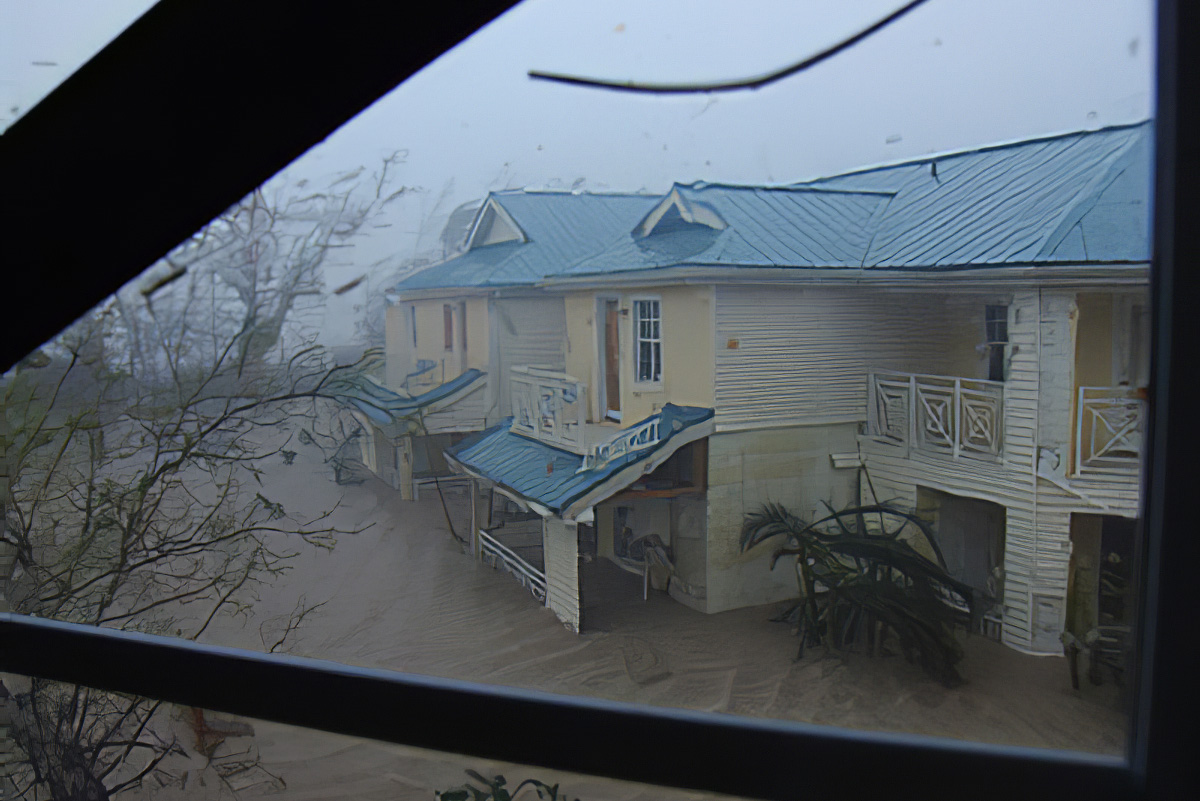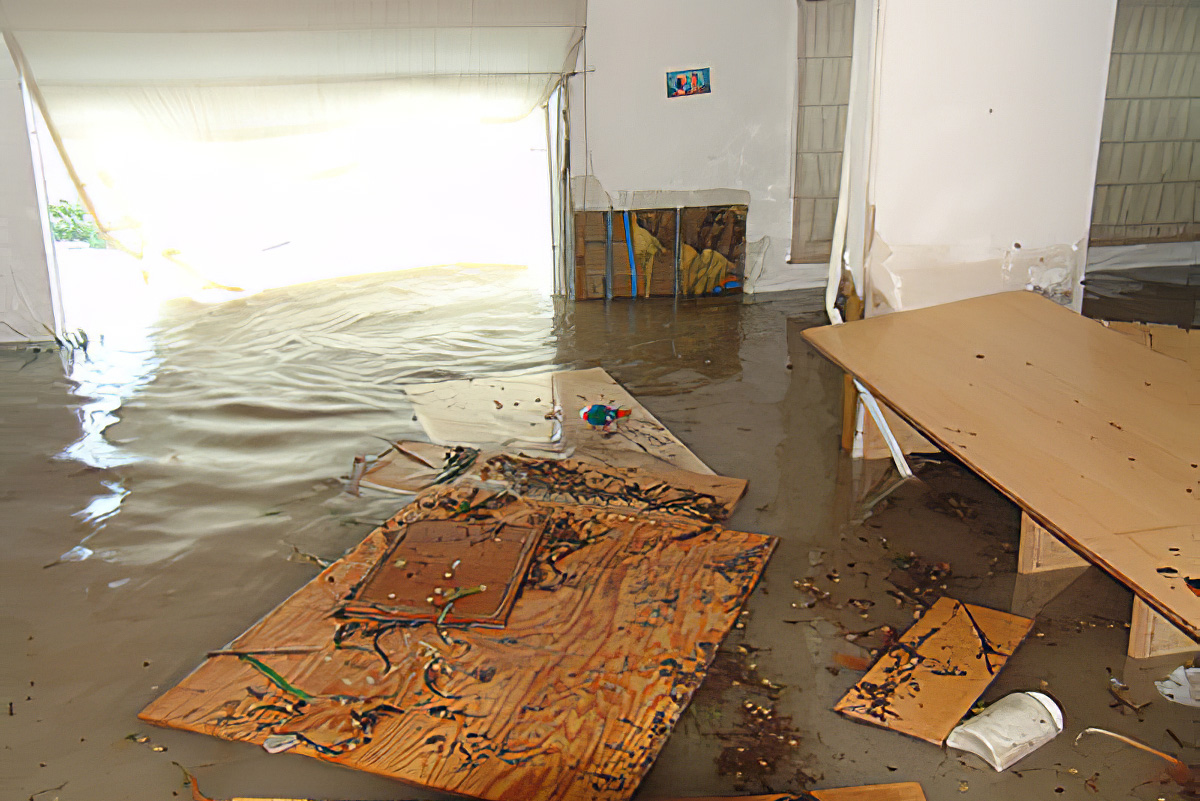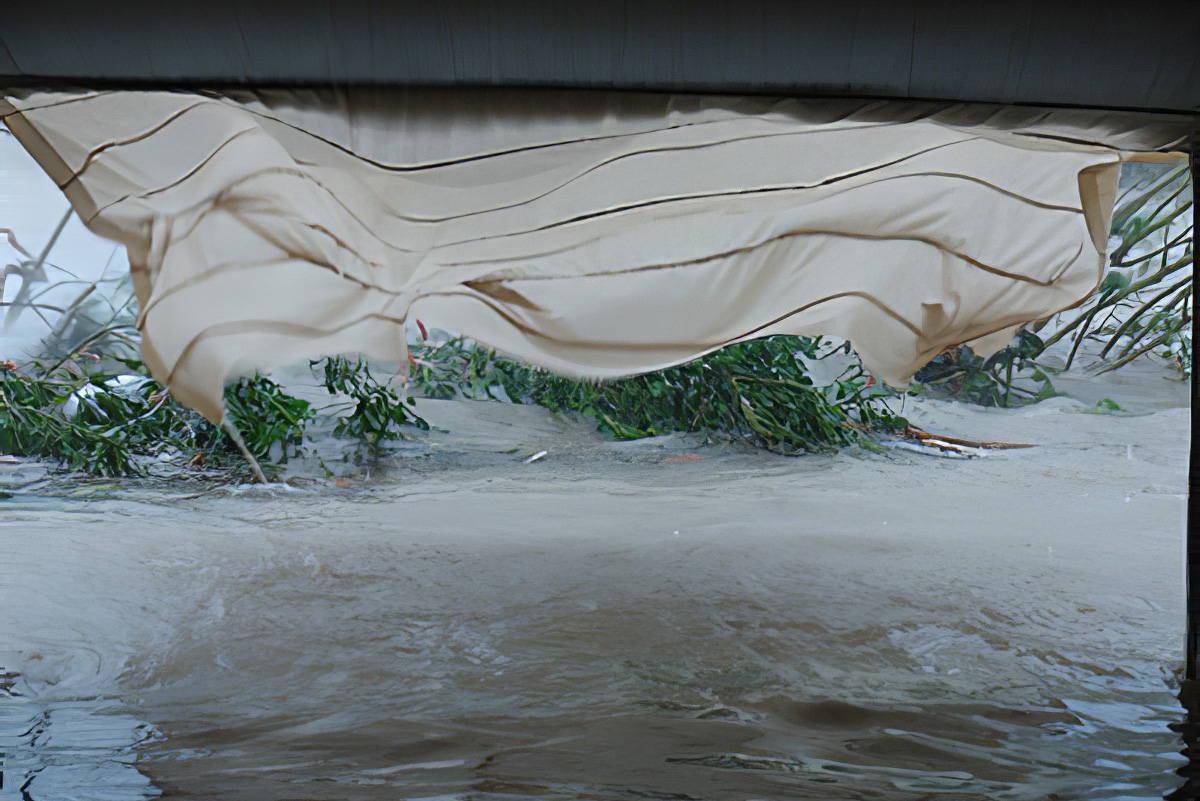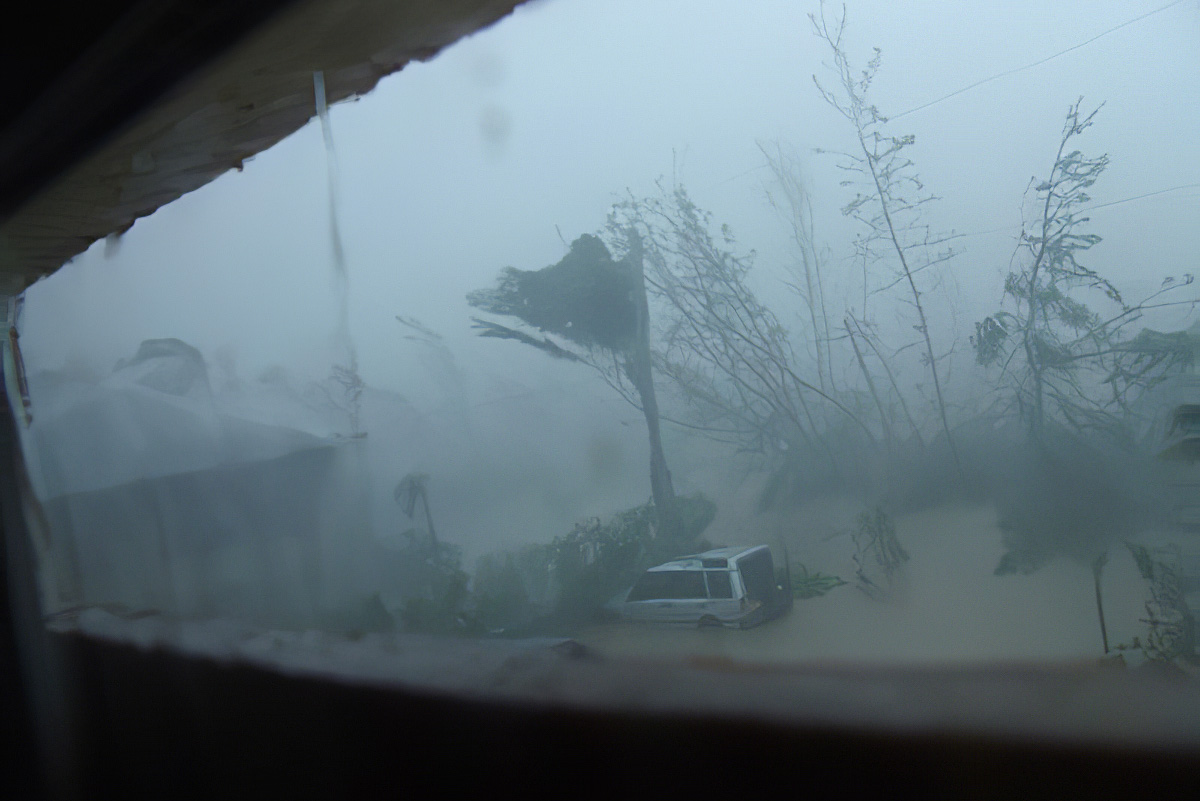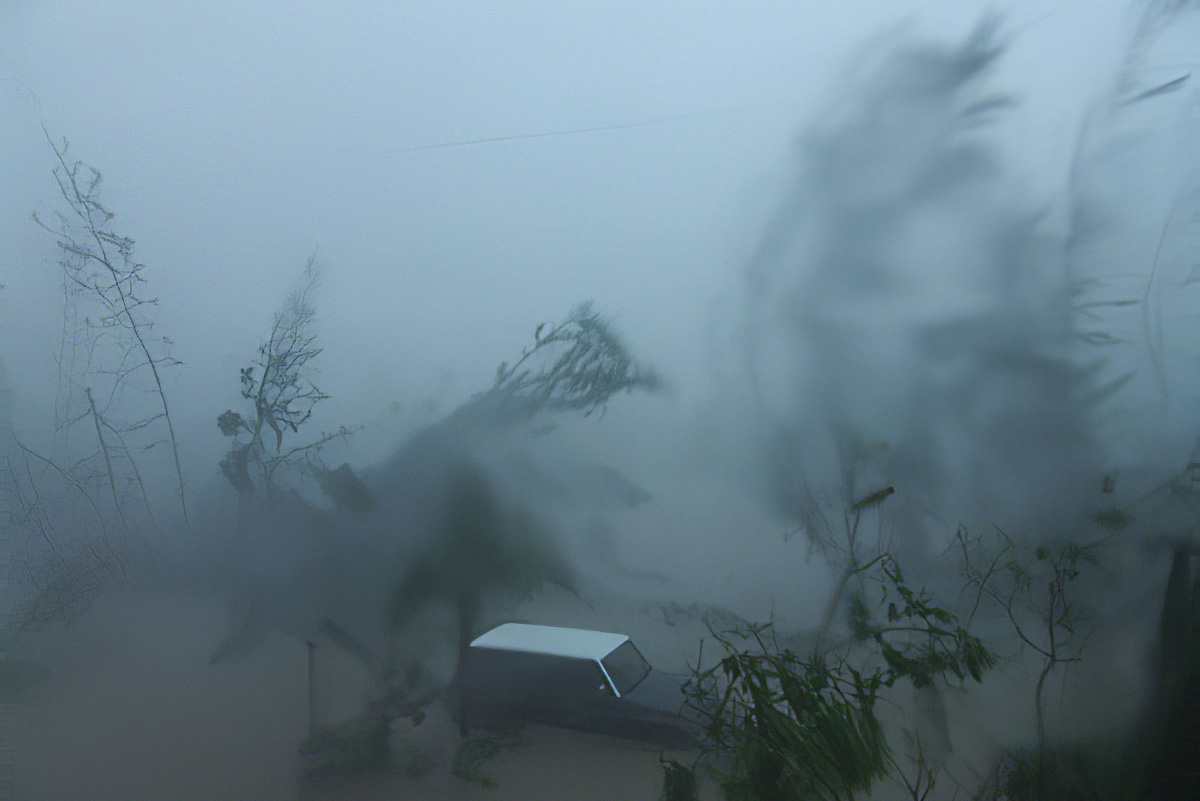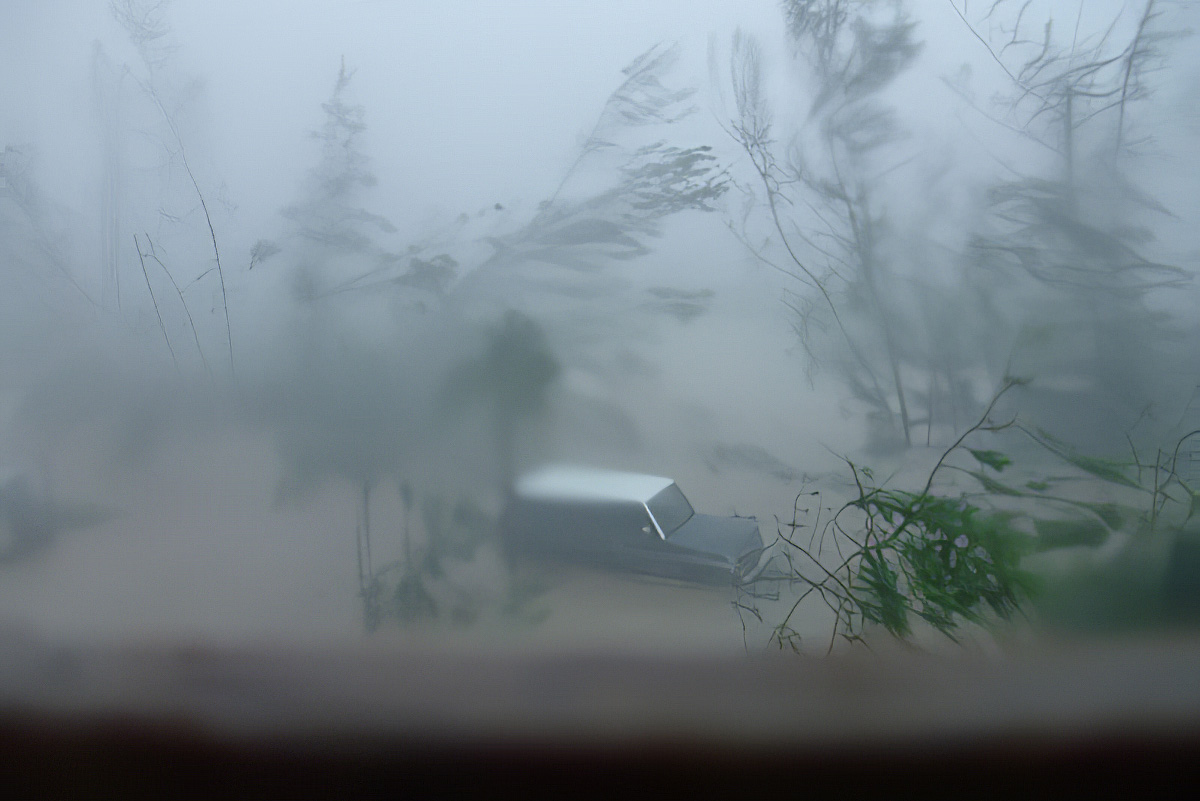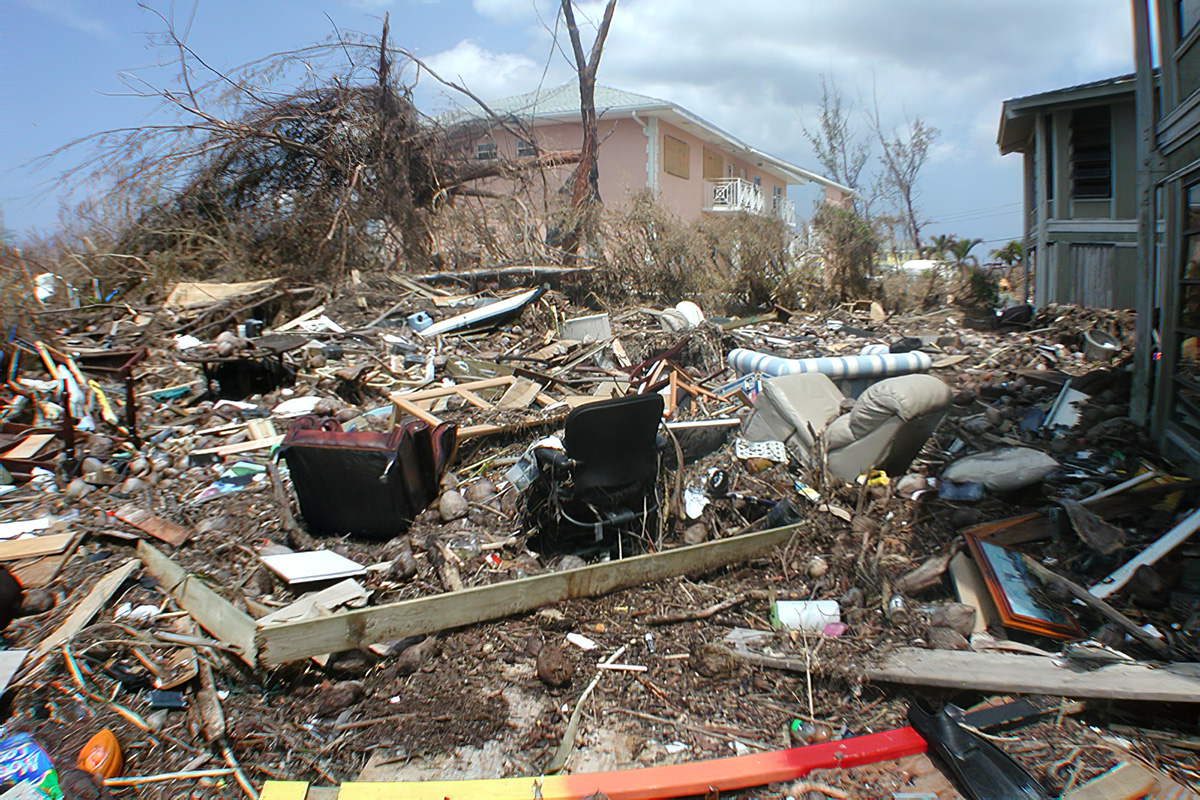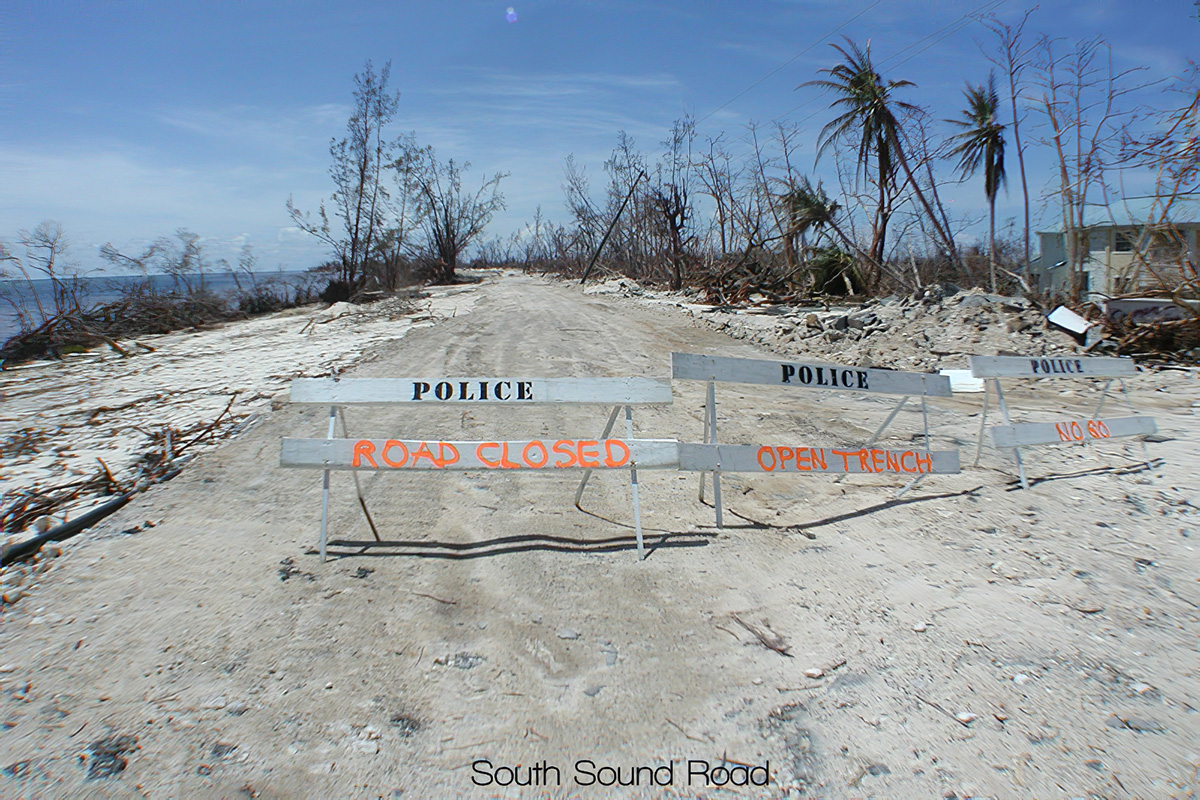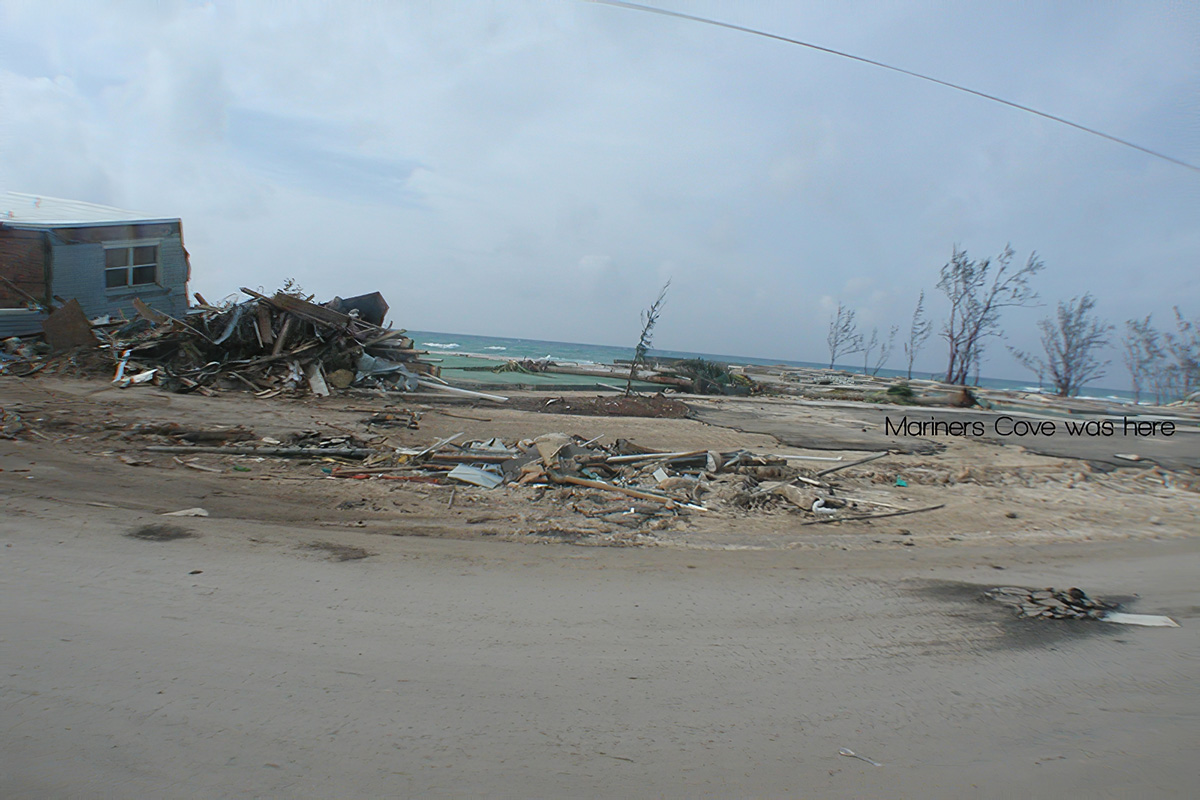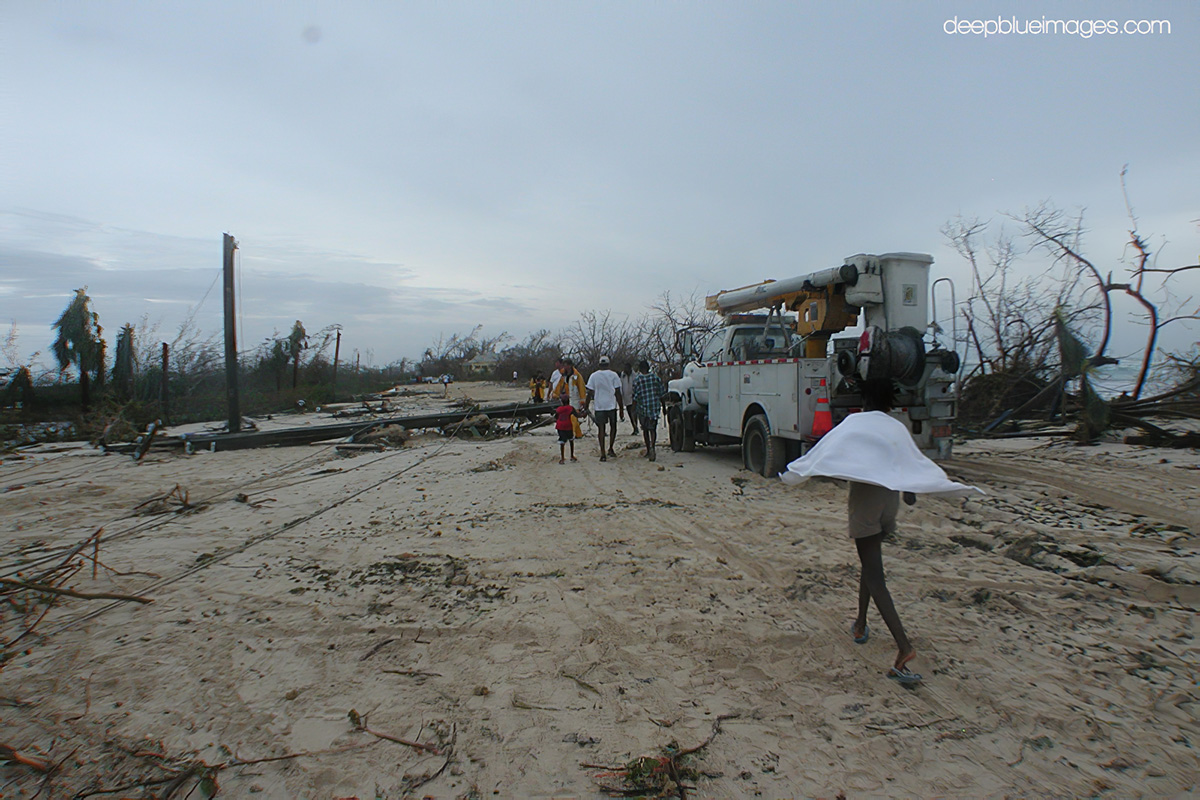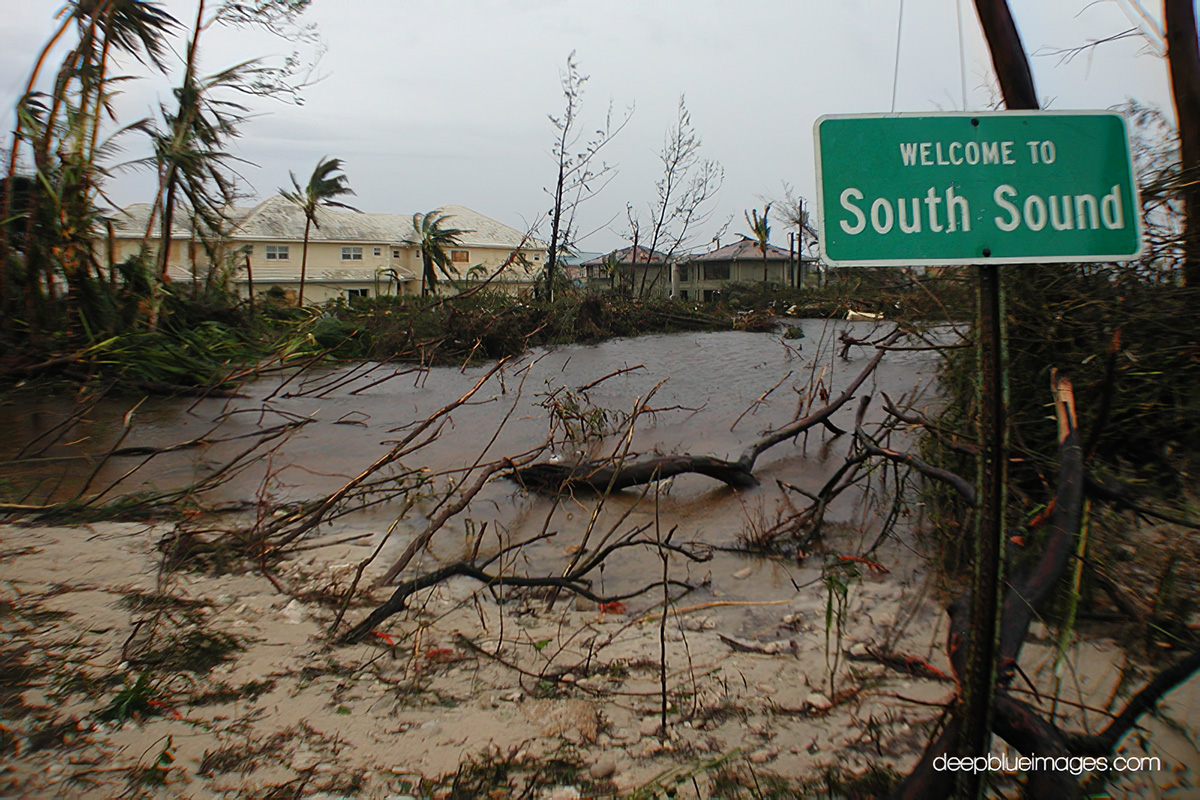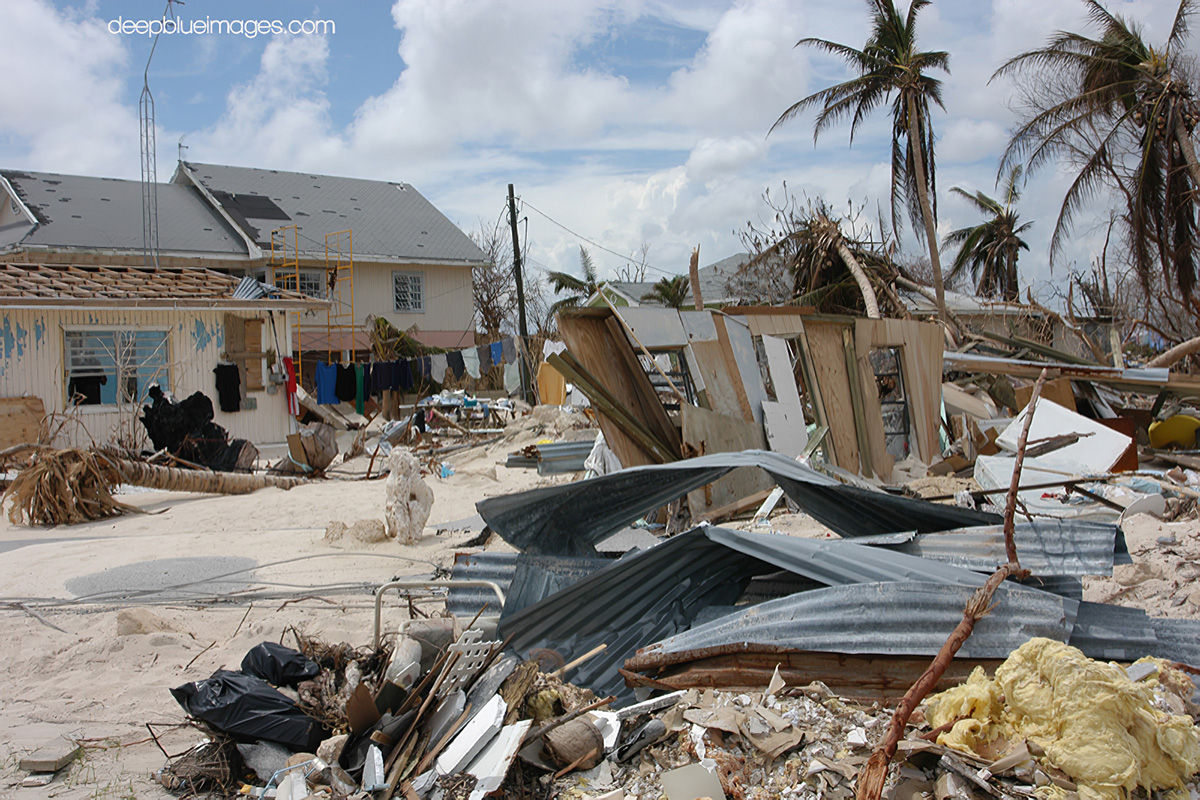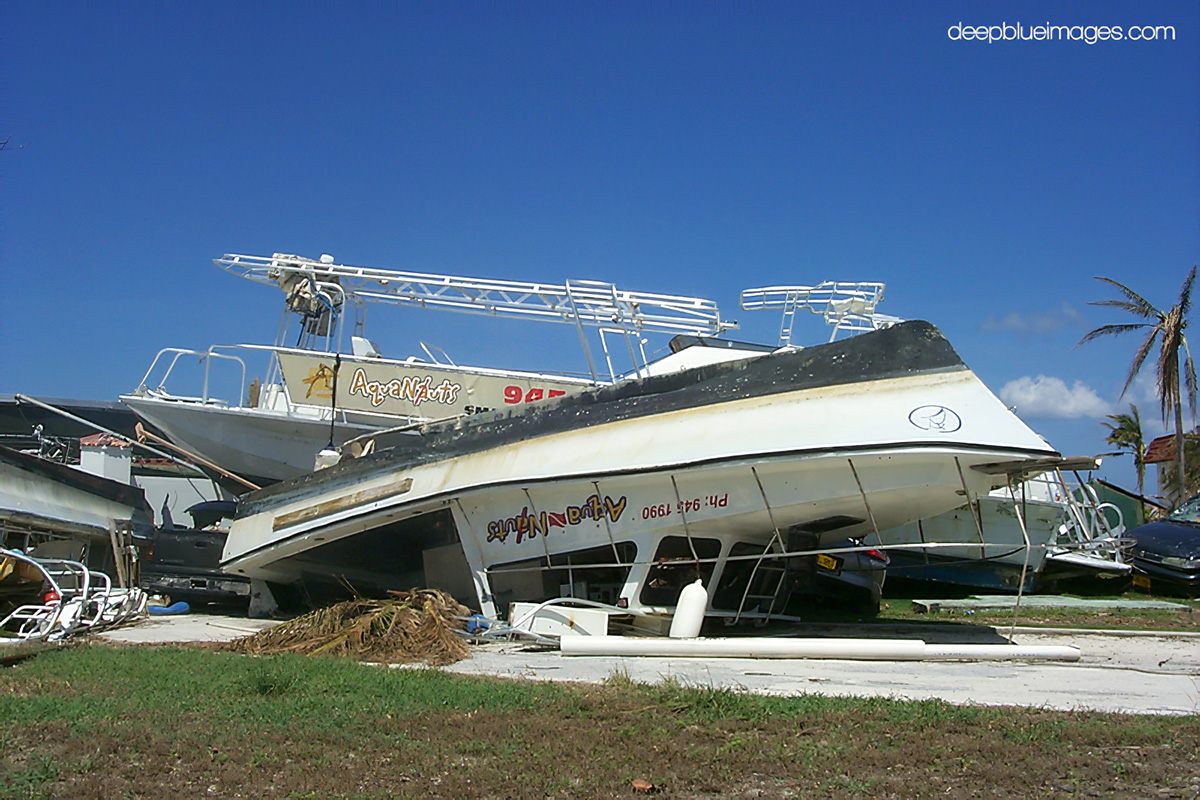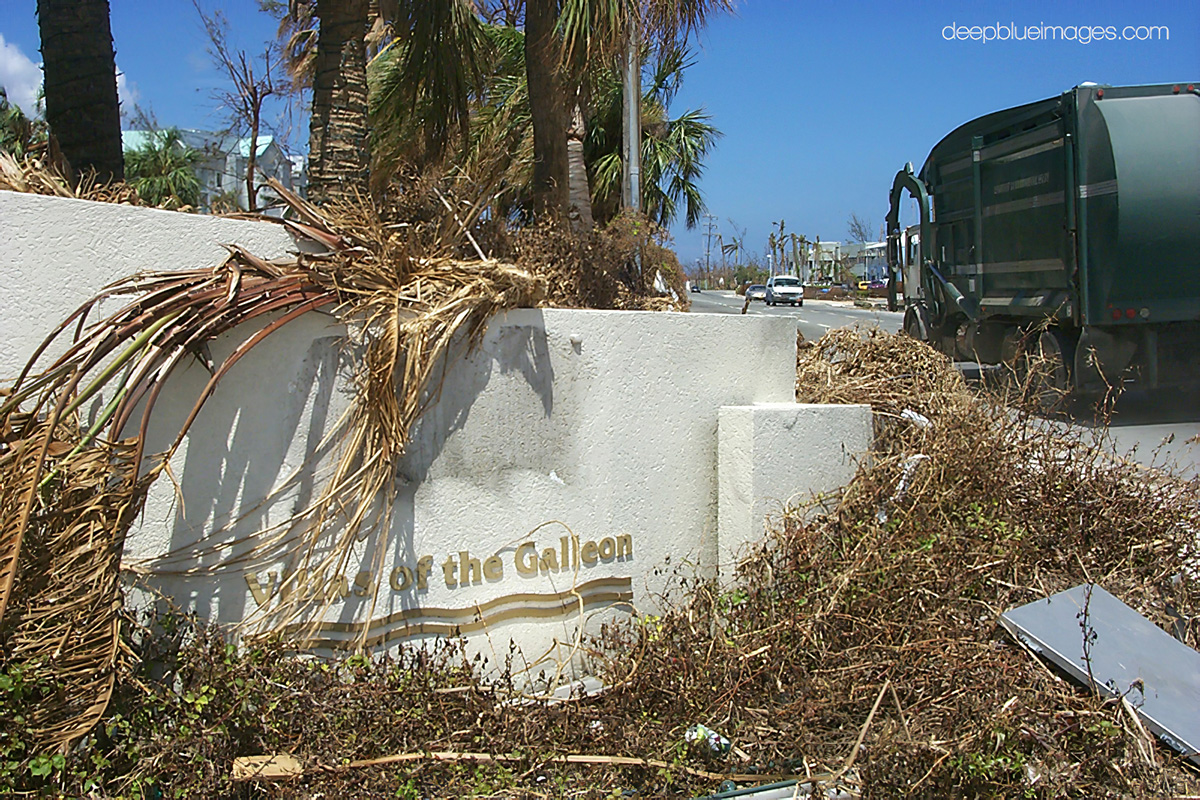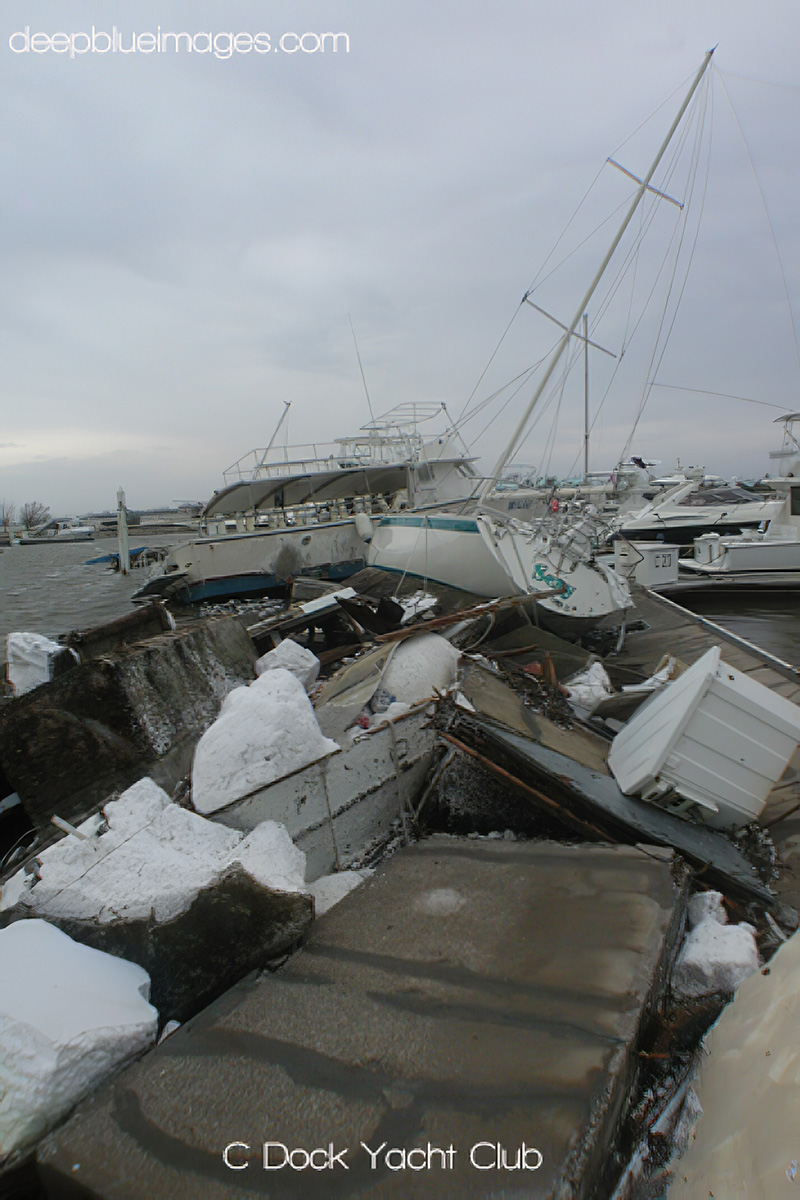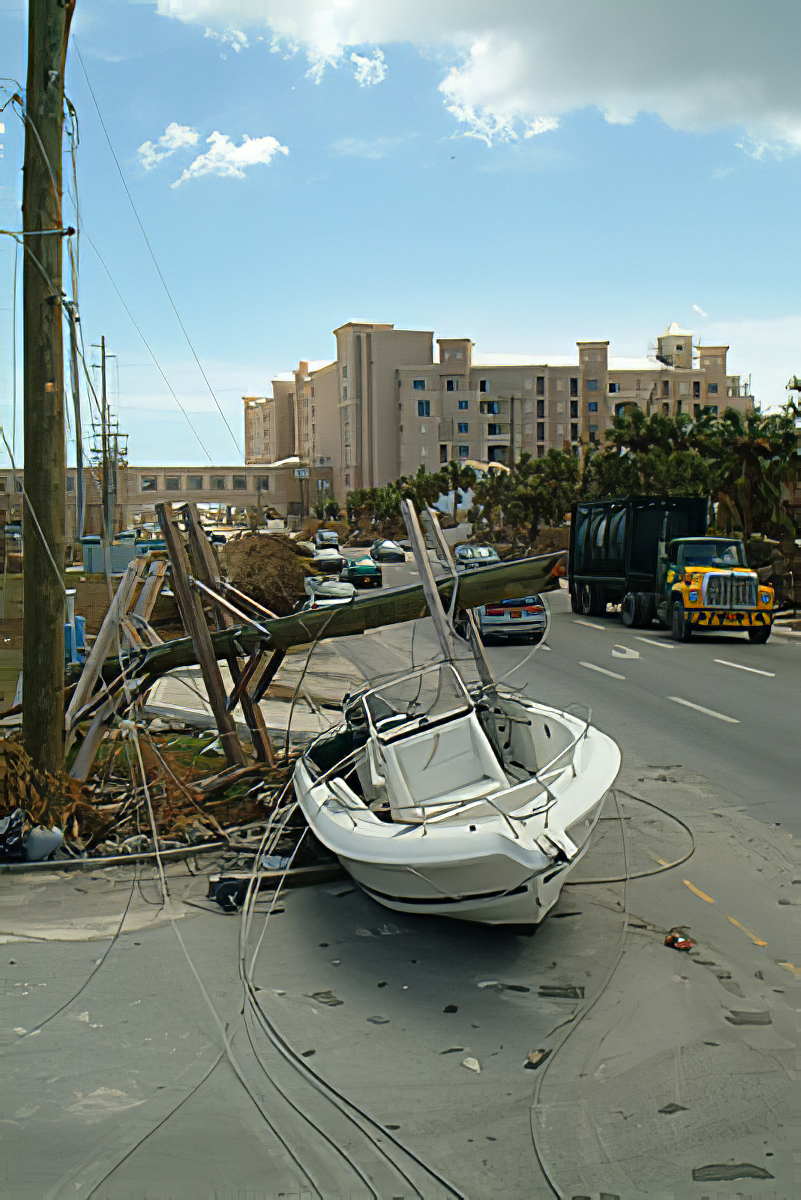Earthquake Resistant & Anticyclonic Technologies
This resort villa was built to withstand the many cyclones and frequent earthquakes in the Caribbean Sea.
Created with House-garden interaction concept in horizontal landscape reflection, this project aims at the integration with the natural conditions of the environment. Its structure allows to house a large family in exceptional conditions of comfort. Built on a plot-size Japanese garden, the villa is equipped with a roof system that prevents the midday sun from reaching its walls, and limit the use of air conditioning. It’s part of the few buildings that withstood the effects of Hurricane IVAN and the subsequent earthquake at the end of 2004.
HURRICANE IVAN REMEMBERED
Hurricane Ivan passed over Grand Cayman on September 11th and 12th, 2004, battering the island with strong winds, inducing island wide flooding from storm surge and causing massive devastation.
10 foot waves were reported in our usually calm North Sound and waves up to 30 feet waves bashed the shorelines. While it came in over night on Saturday, the Catagory 5 hurricane made its closest approach at 10 am on Sunday when the eye passed 21 miles SW of the Grand Cayman with winds of 150 mph and gusts of 220 mph.
I look through these photos and the memories come flooding back. No cell phones, no water or electric for months, no mosquito plane, no air con, no internet, limited food supplies and the insurance ‘offices” as well as many other buildings were marked with arrows drawn on cardboard and stapled to whatever was around. 70% of homes were sever犀利士
ely damaged and over 50% of all the trees and cars destroyed.
For those who have been living or have been coming to Cayman for years, you may recognize many of the landmarks in the photos or you may not. It is amazing to see how Cayman has rebuilt and thrives again. Let’s hope for a quiet hurricane season in 2013.
© DEEP BLUE IMAGES – David Wolfe photography
Some significant strides made in enhancing the preparedness and response mechanism for the Cayman Islands include:
- The retrofitting and strengthening of shelters, and upgrading their level of self sufficiency (so each shelter can operate in isolation for extended periods of time)
- Erection of directional signs for the shelters
- The development of a storm surge atlas to assist in the identification of flood prone areas the retrofitting of the hospital to reduce the impact of flooding on the hospital grounds
- The protection of road infrastructure through the construction of sea walls and increased elevation of new roads
- The development of a hazard focused, informational website Caymanprepared.ky
- The development of a national hurricane plan
- The mandatory requirement that all government agencies develop contingency plans to deal with the effects of a hurricane
- New technology and equipment for the national response teams to monitor and coordinate response to any event
- Increased community participation in preparedness and response activities within the districts
Hurricane Ivan Summary:
- Maximum sustained winds: 150 mph (241 kph)
- Peak wind gusts: 220 mph (354 kph)
- Rainfall 12 inches (30.5 centimeters): from 7 pm 11/09/2004 to 7 am 13/09/2004
- Pressure: Below 970 mb (hPa)
- Storm surge: Estimated 8 to 10 feet (2.44 to 3 meters)
- Wave heights: Observed estimates 20-30 feet (6-9 meters)
- Duration of winds greater than 100 mph (161 kph): 7 hours
- Damage assessment: $1.5 to $2 billion in building damage
- School days lost: 25 to 40 days
- Approximately 6,500 people sheltered in formal shelters, the hospitals and large office buildings
- Approximately 10,500 people left the Island by plane from September 9 to 30
- Approximately 8500 cars were destroyed
![[Villas construction site – Cayman Islands] Facing Hurricane Ivan](http://baltasar.fr/wp-content/uploads/2018/02/villas_ky_chantier_000_cover-1200x675.jpg)


